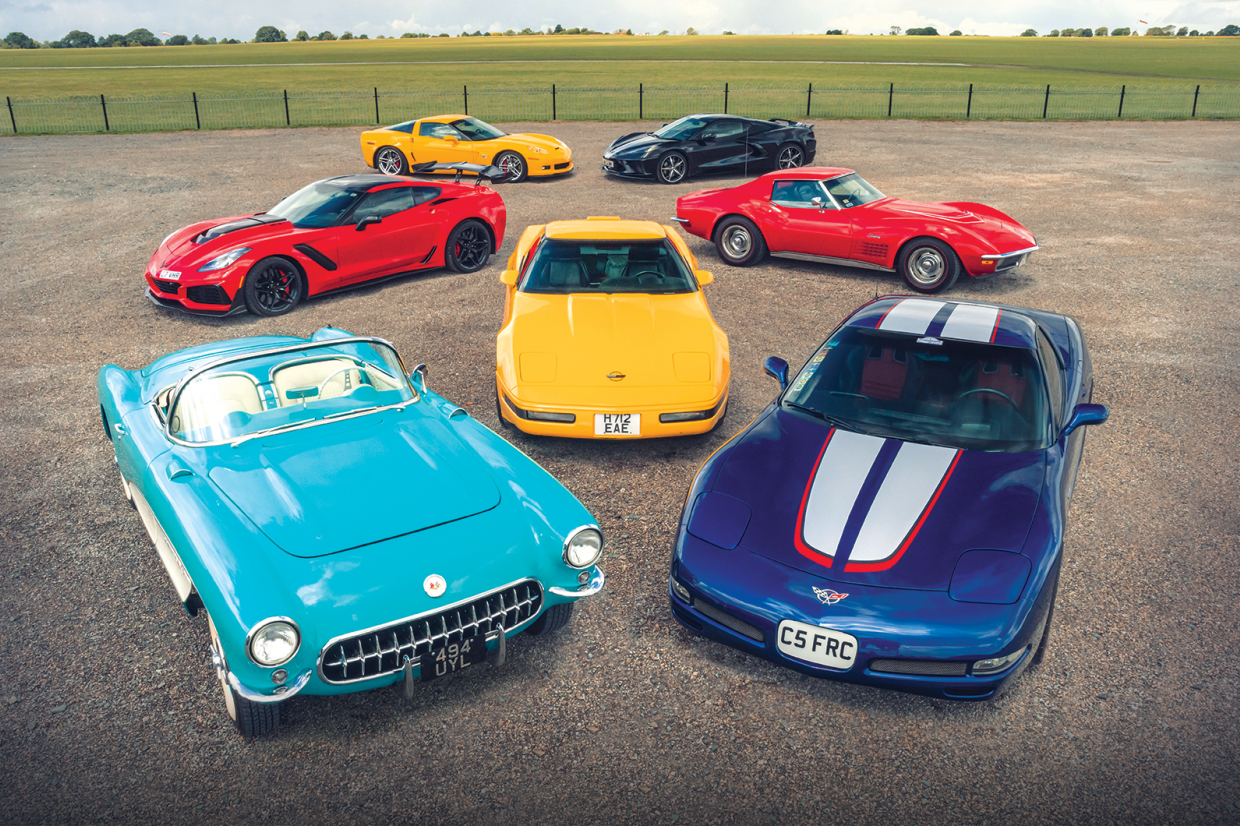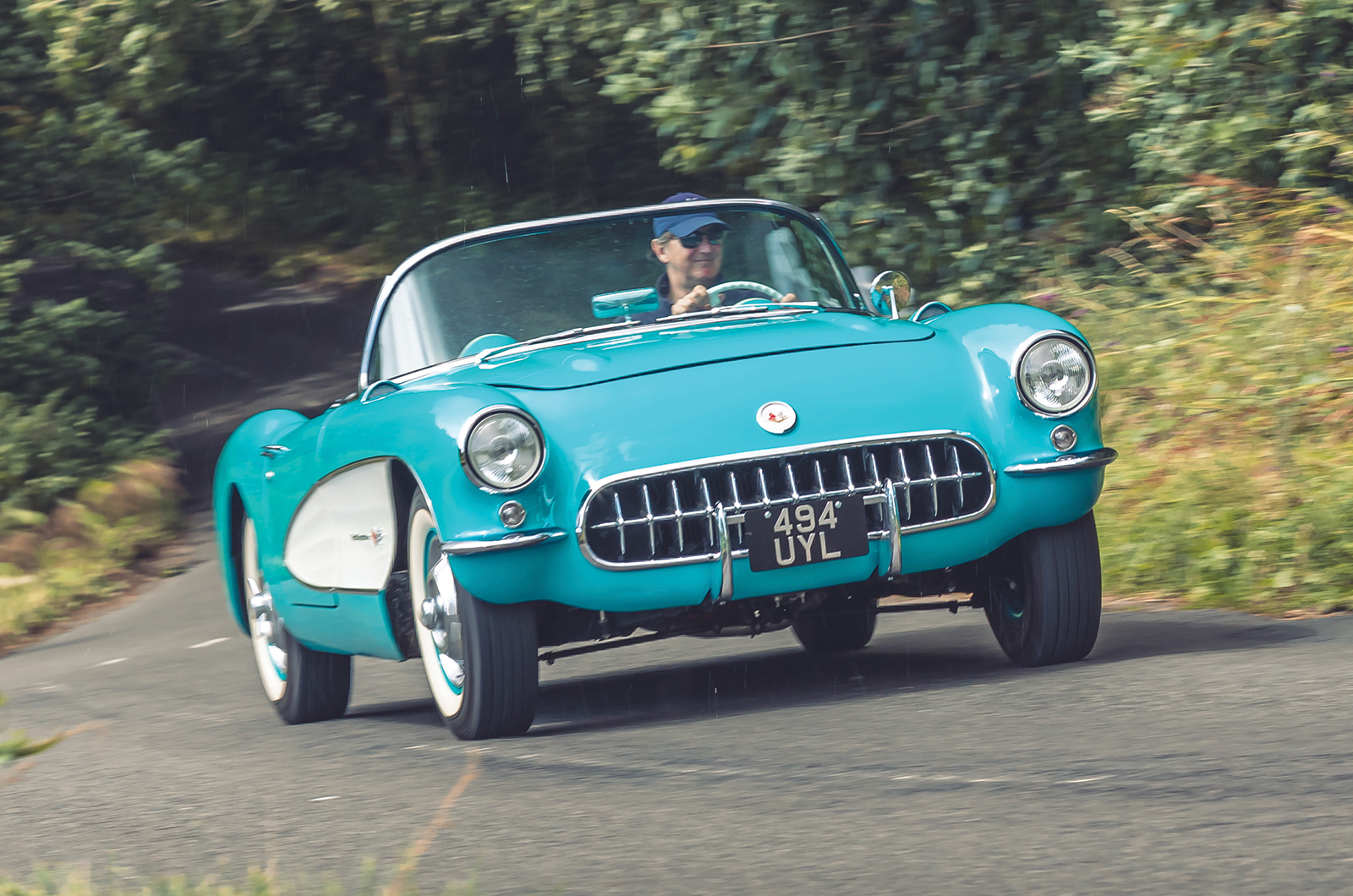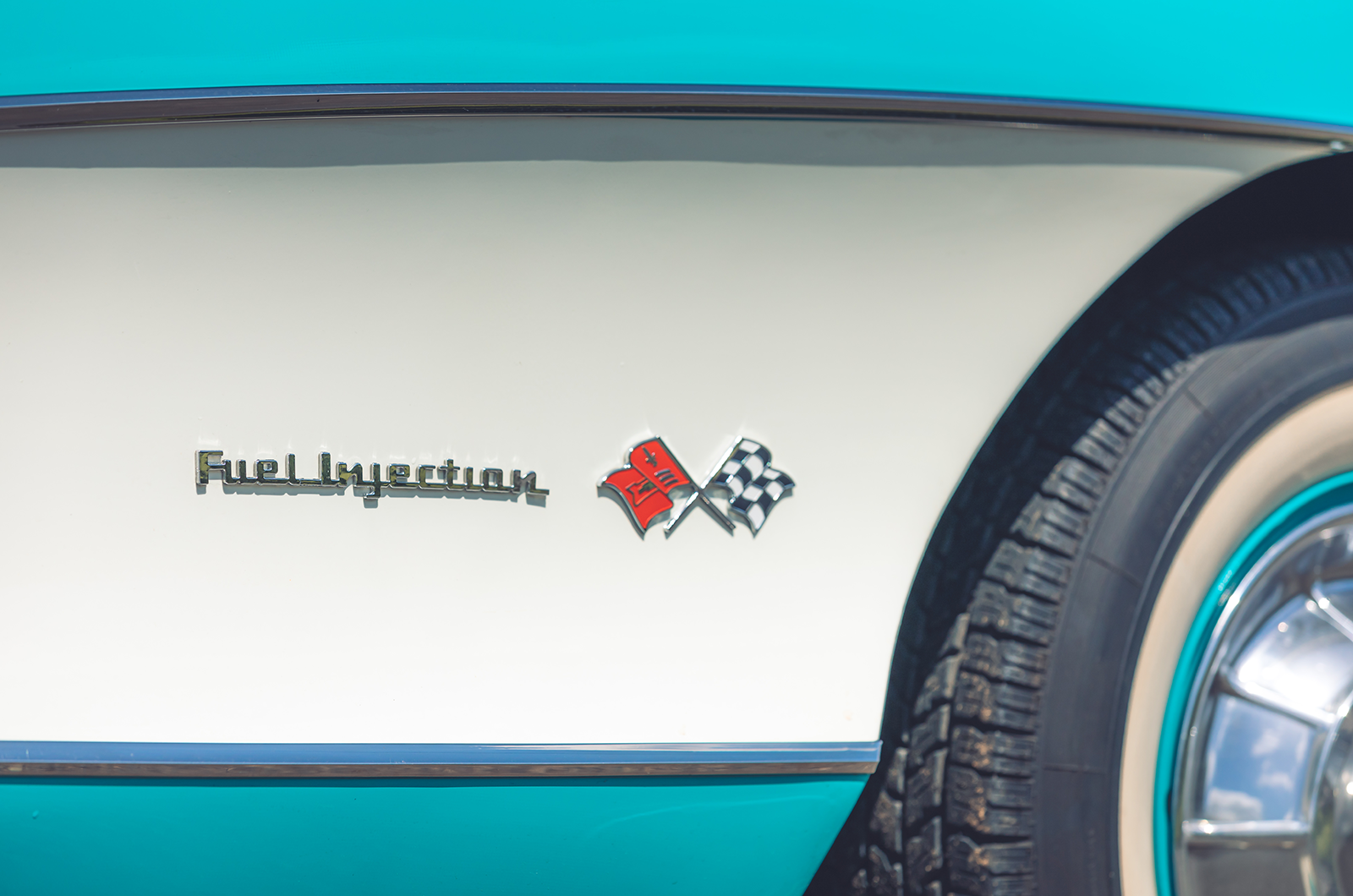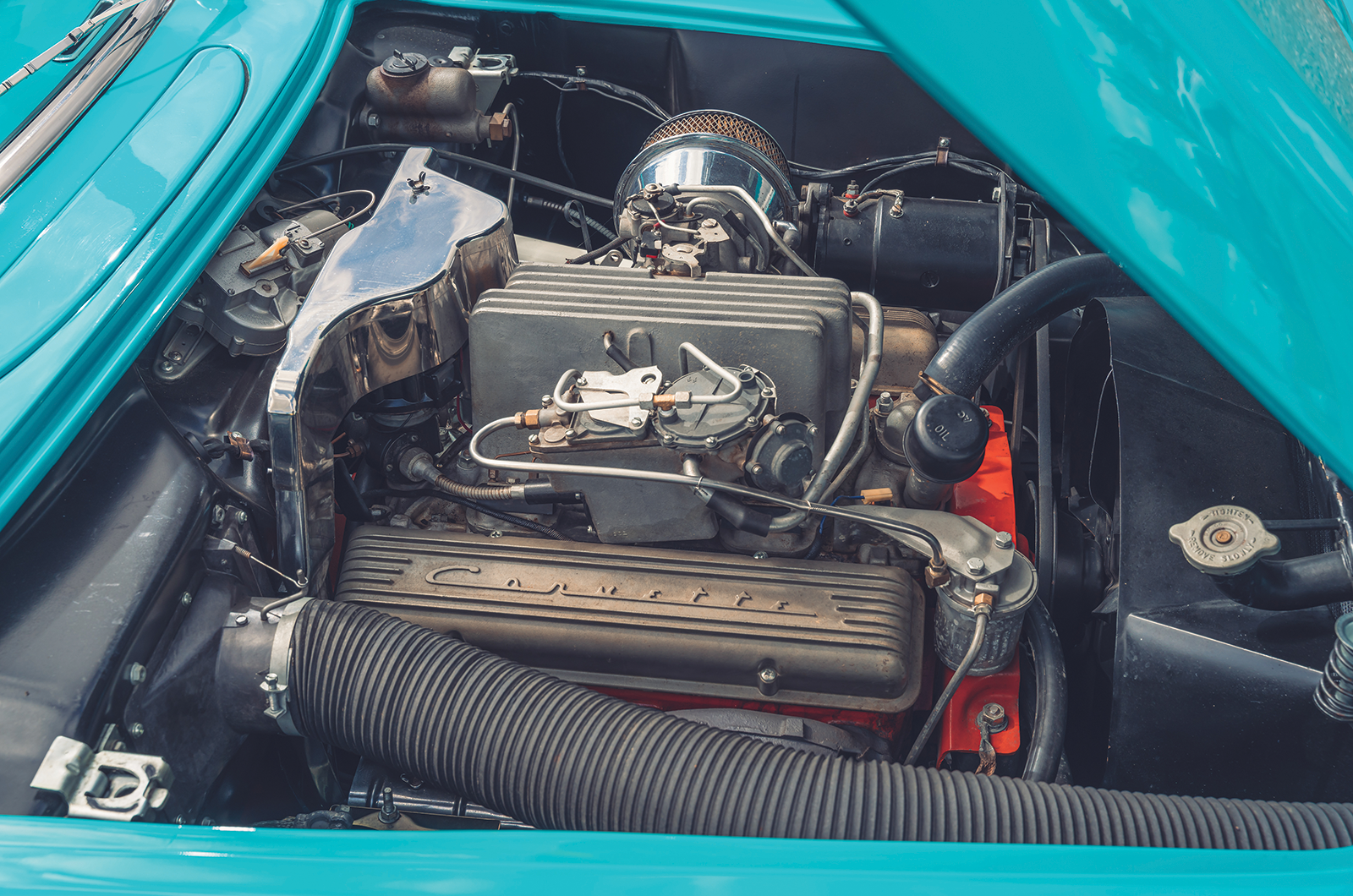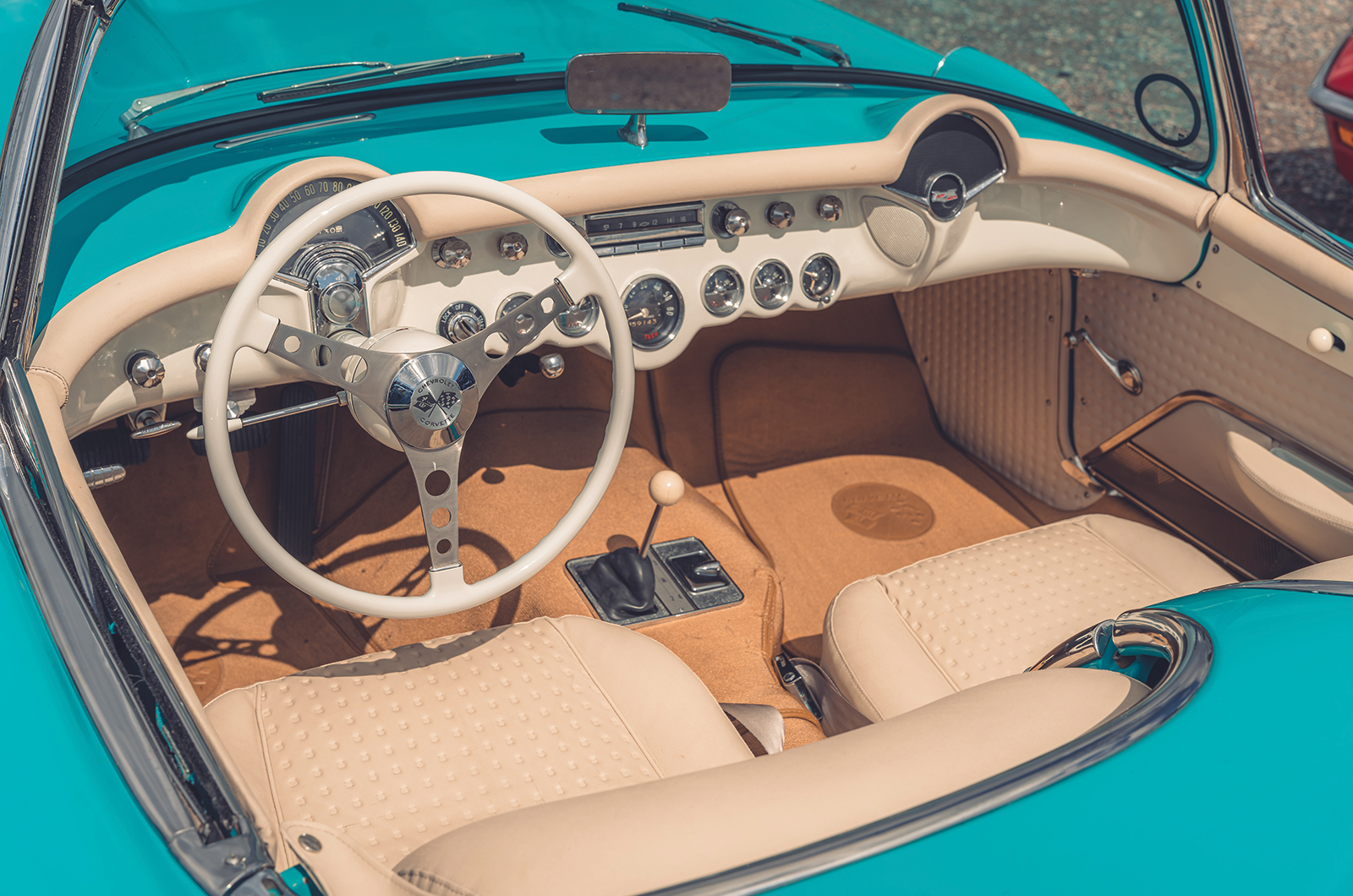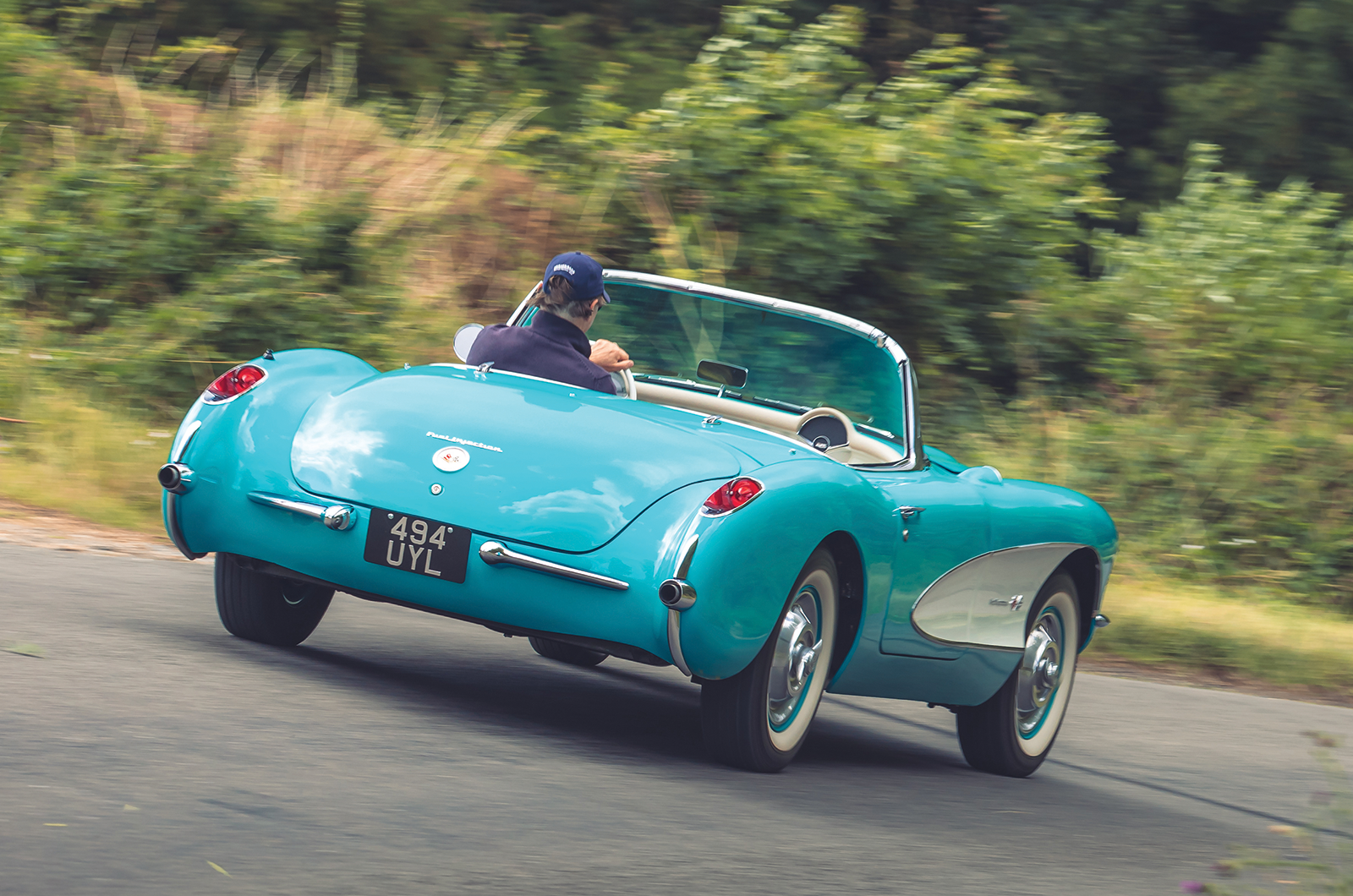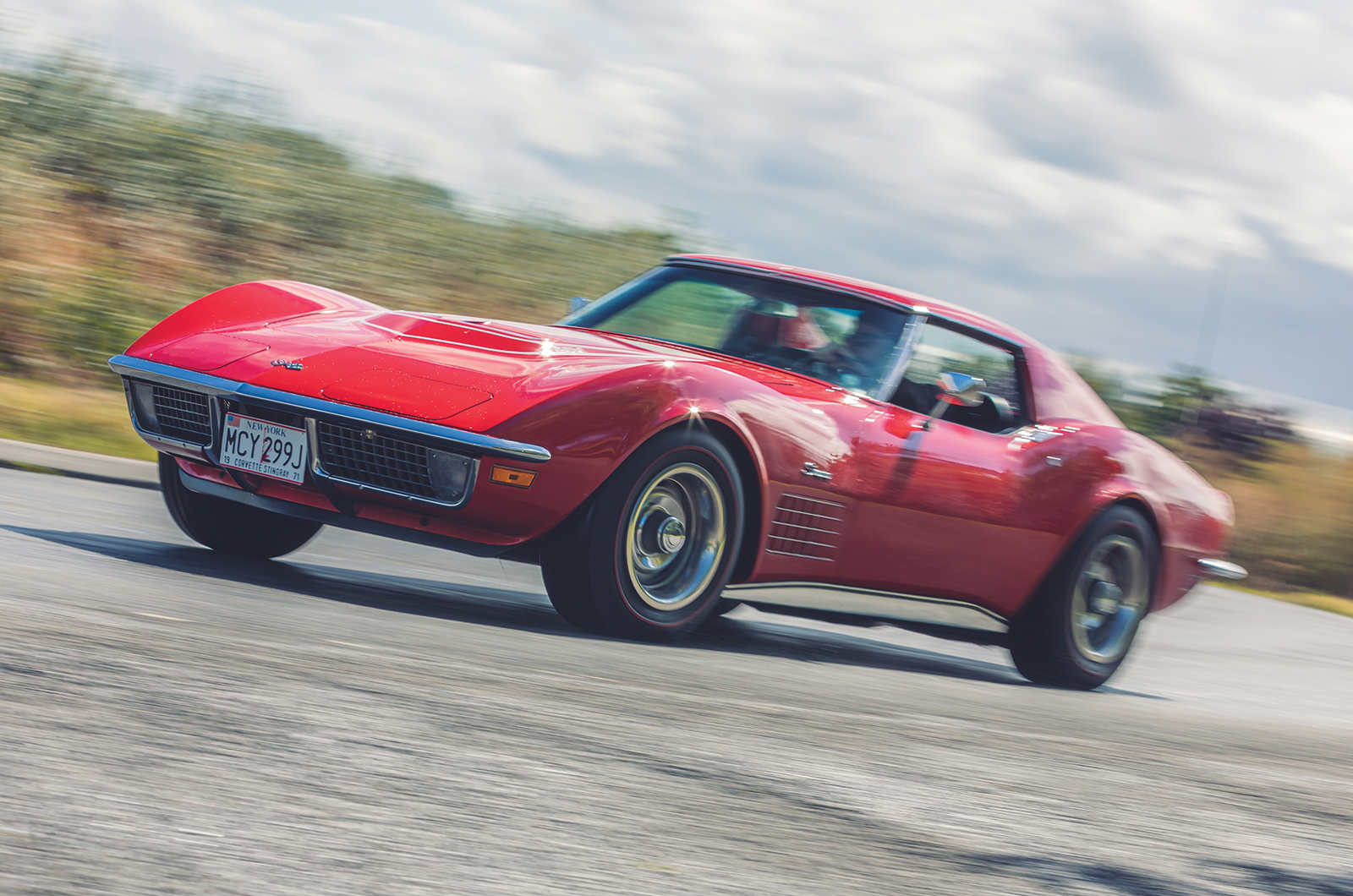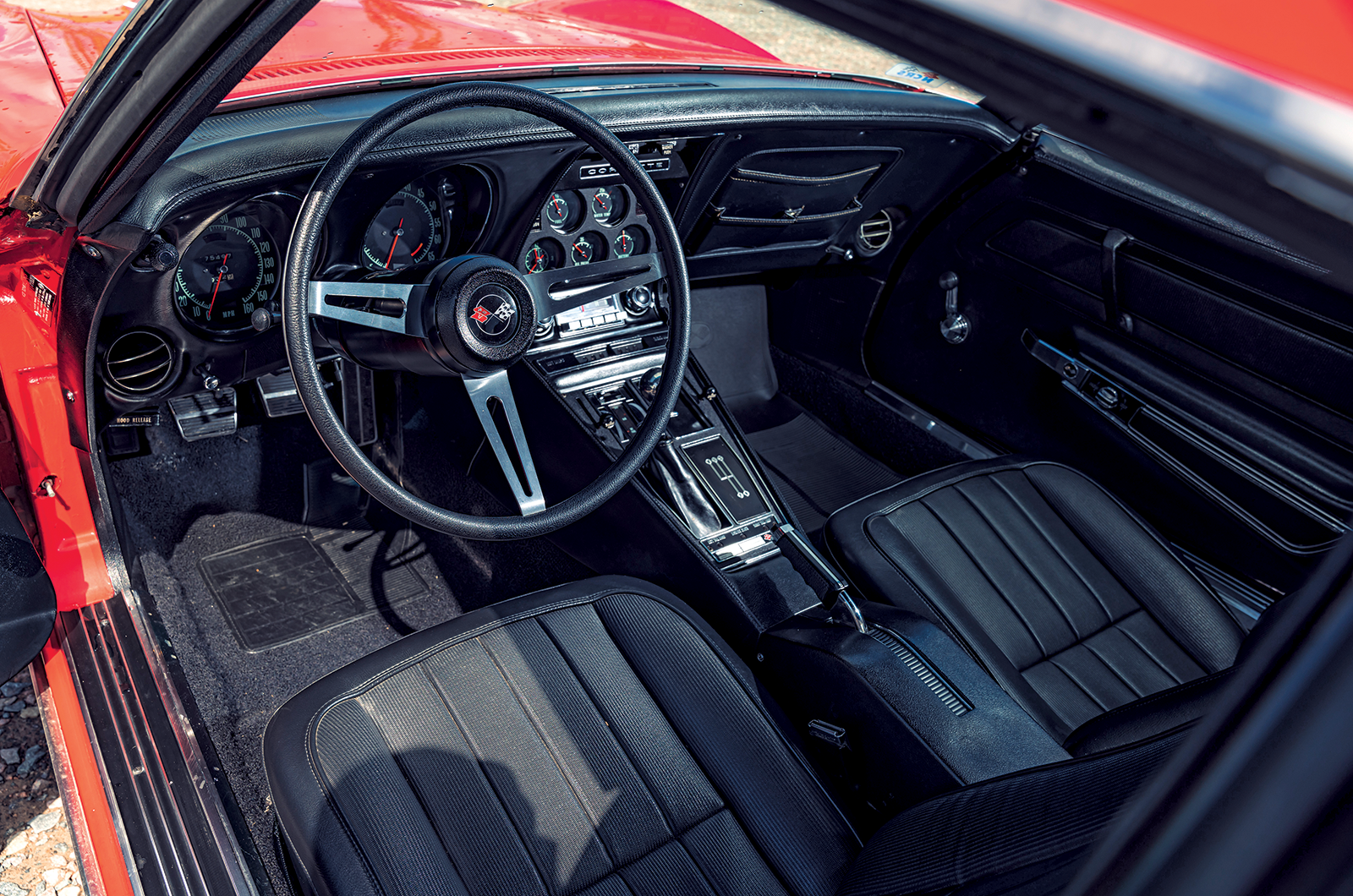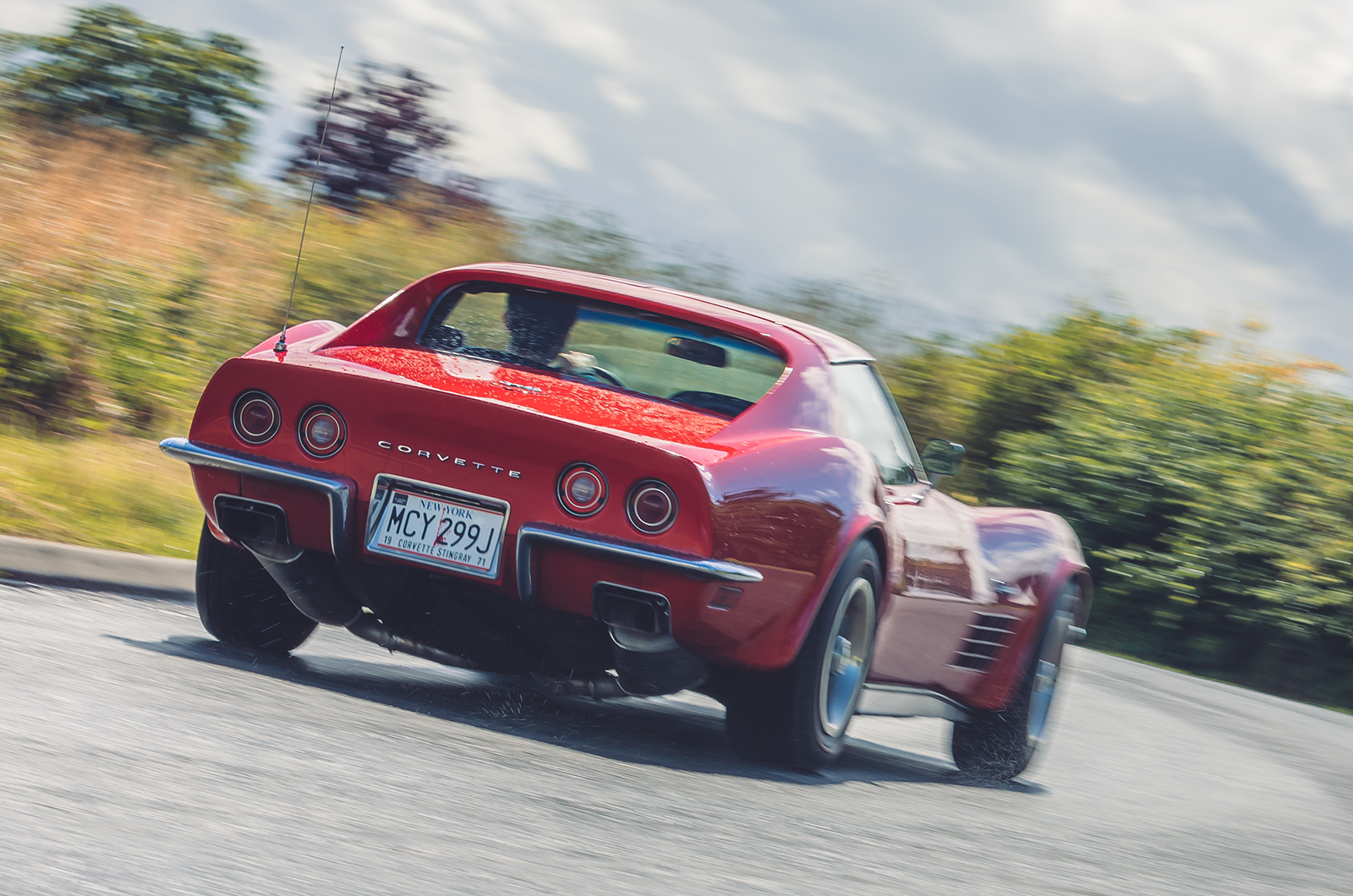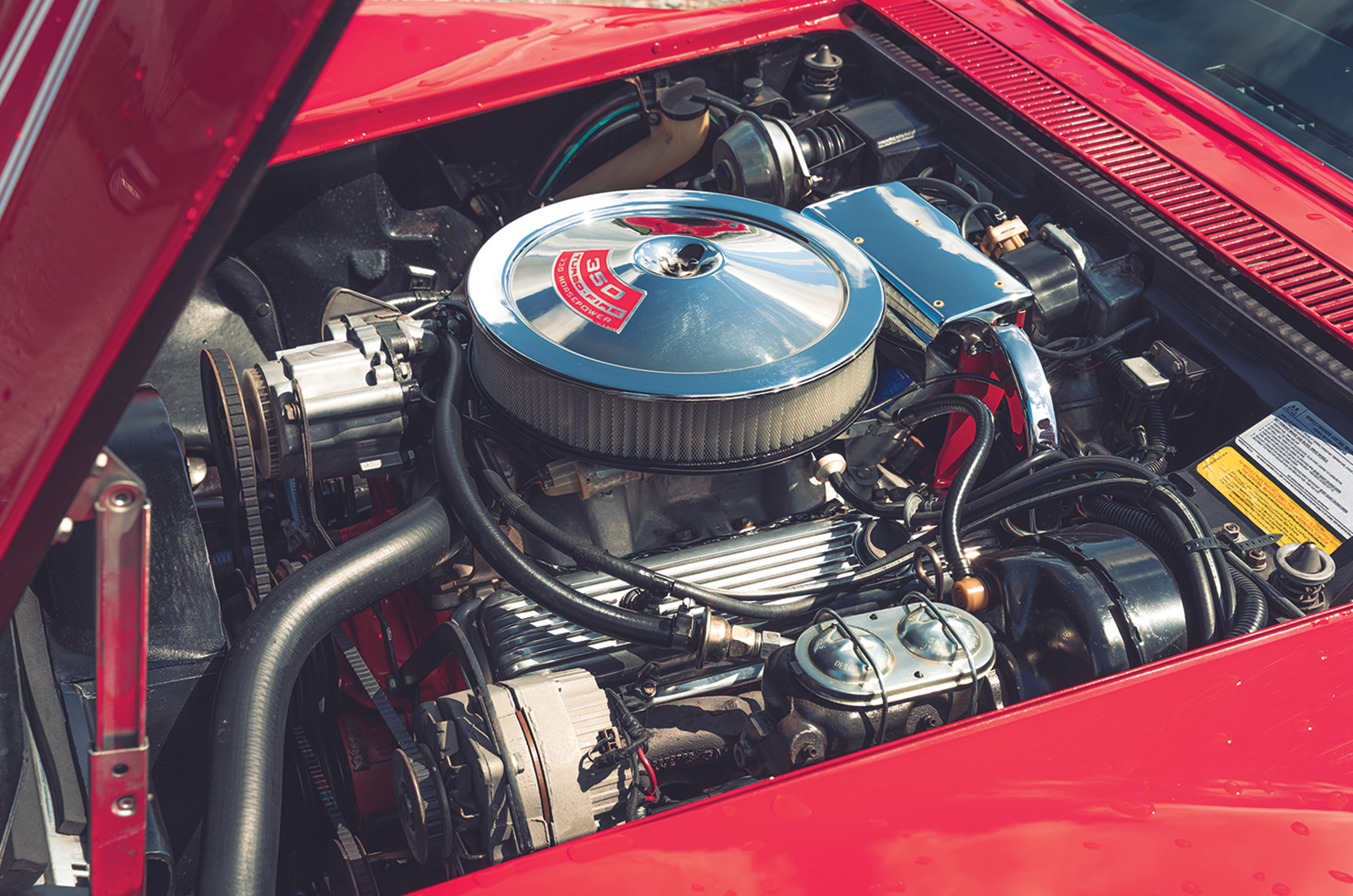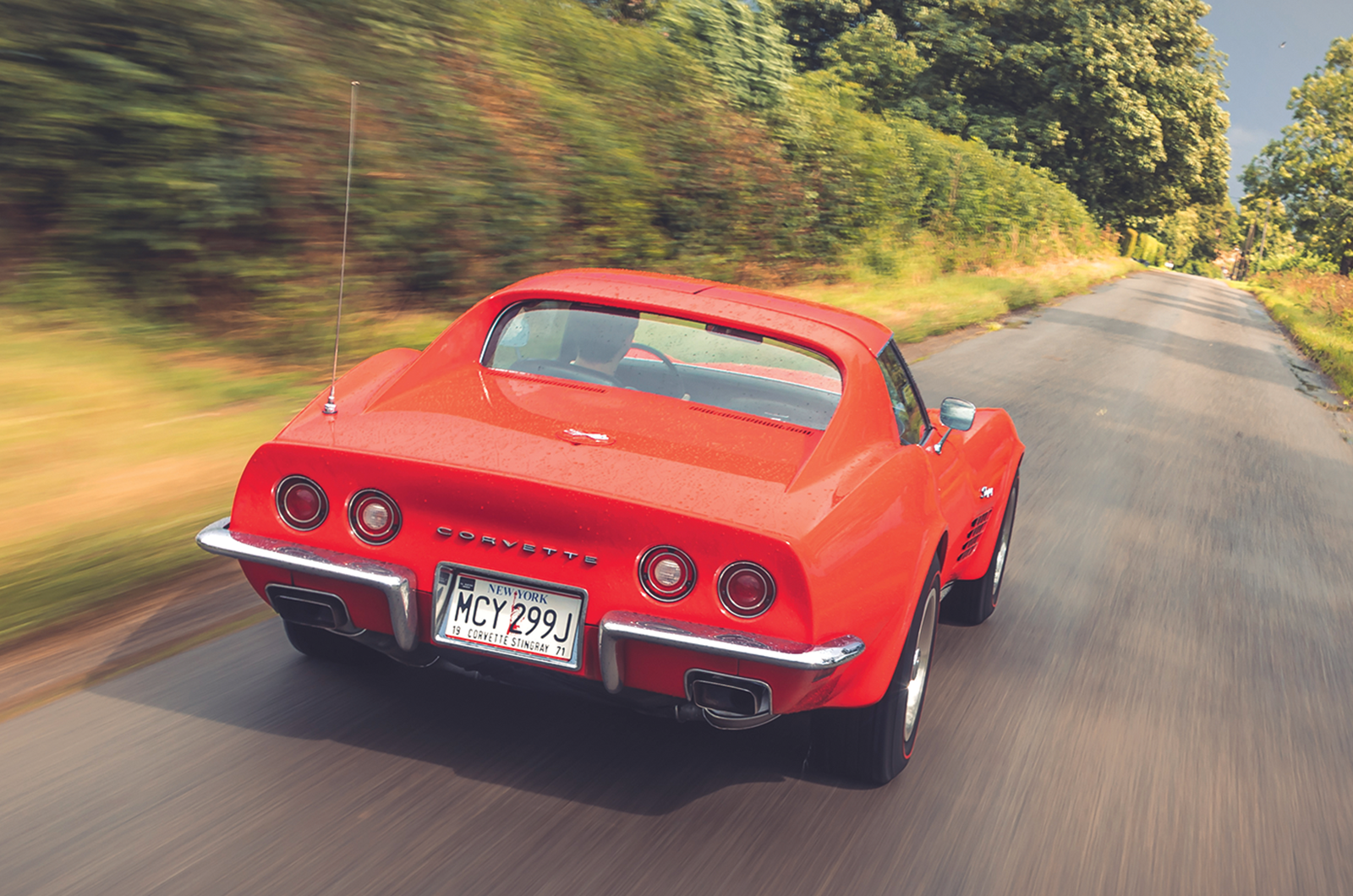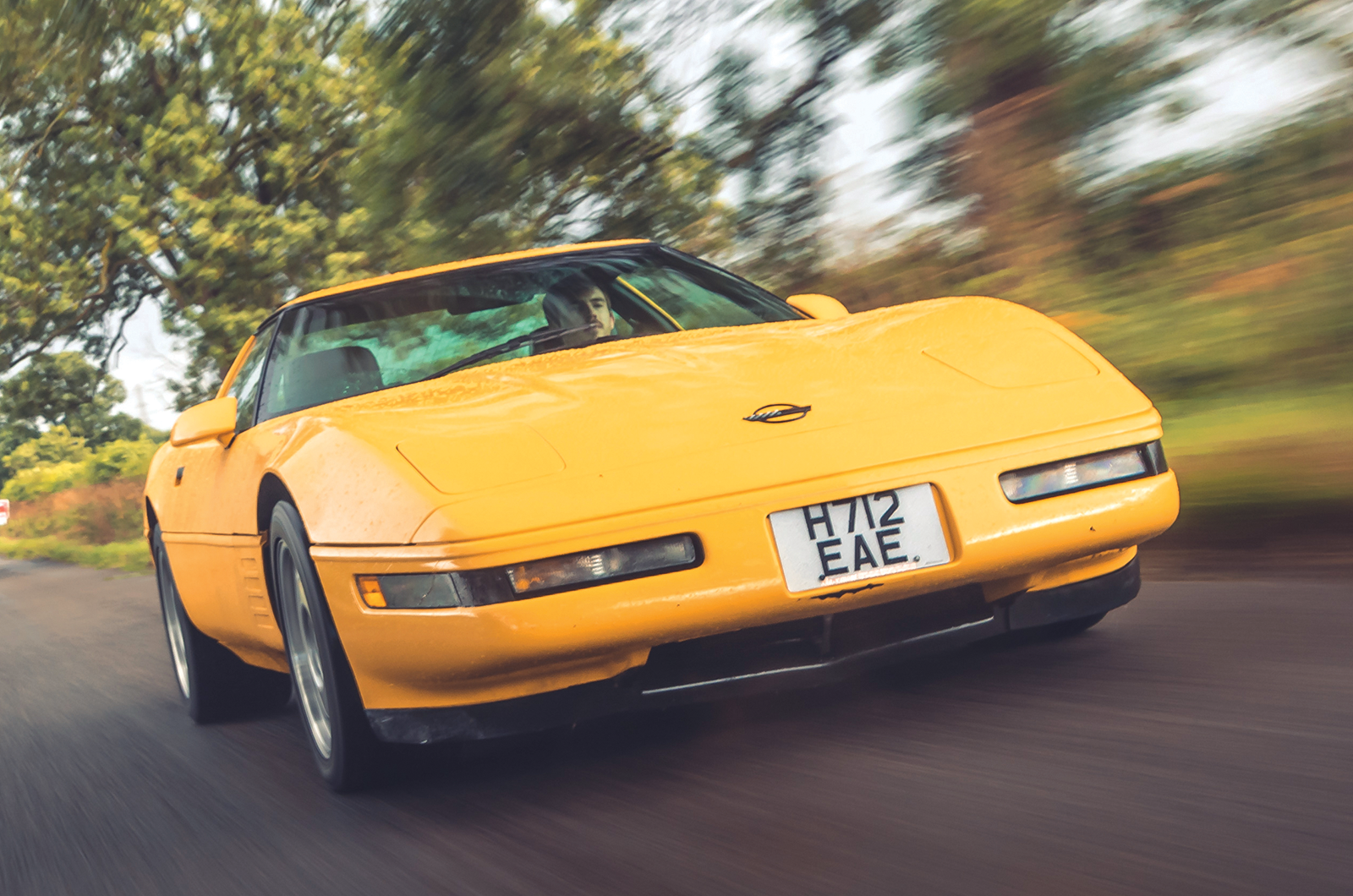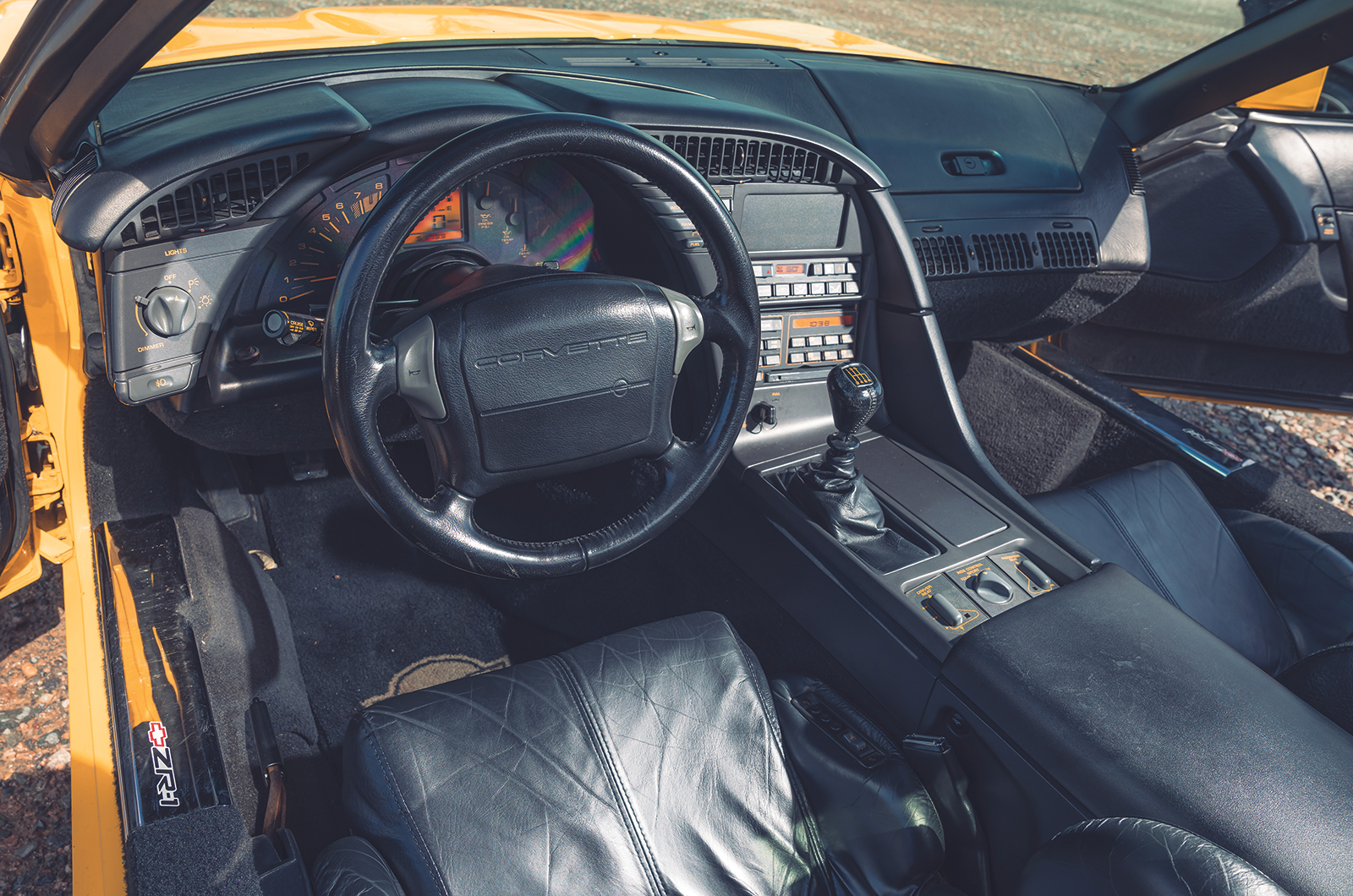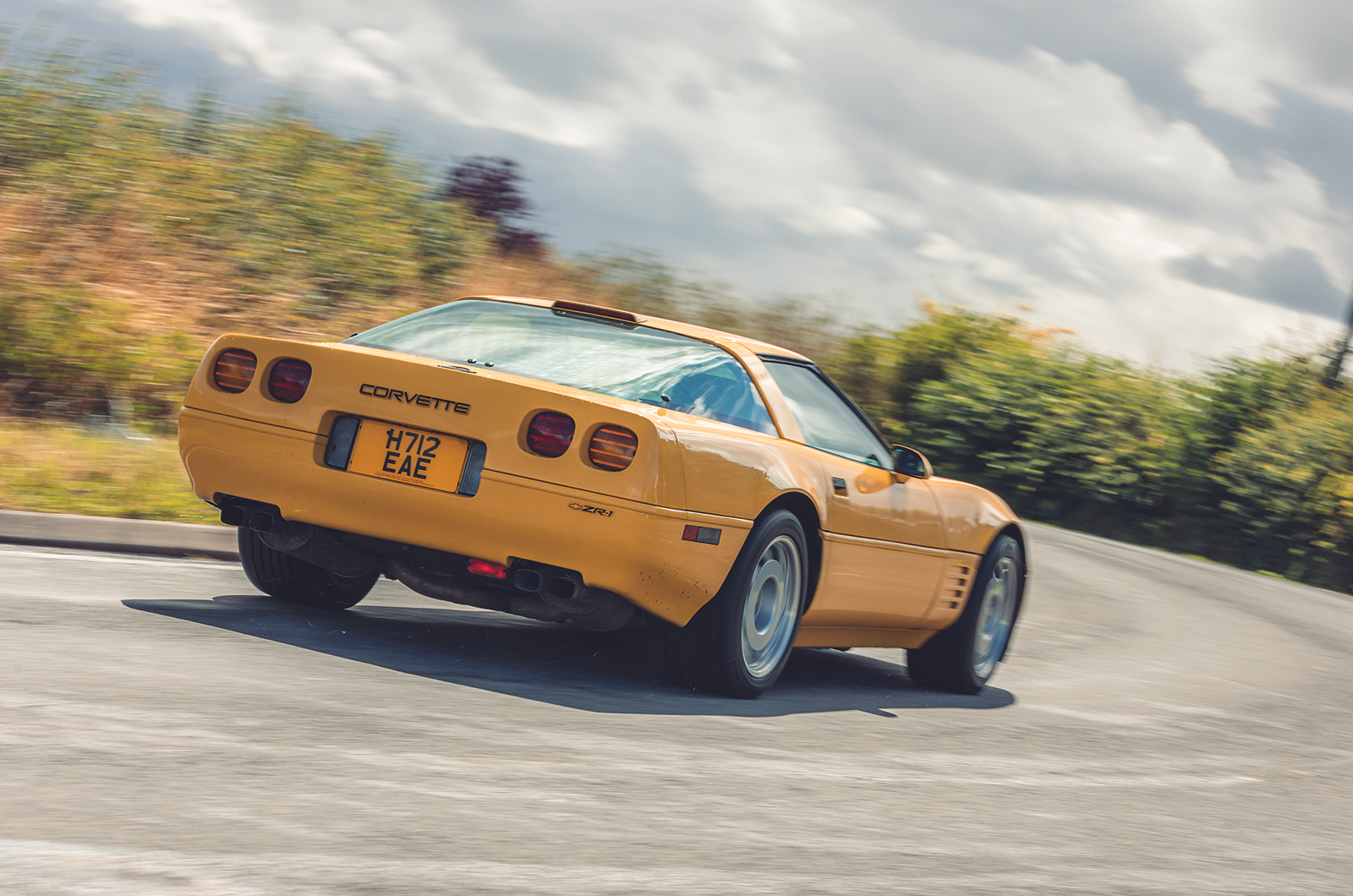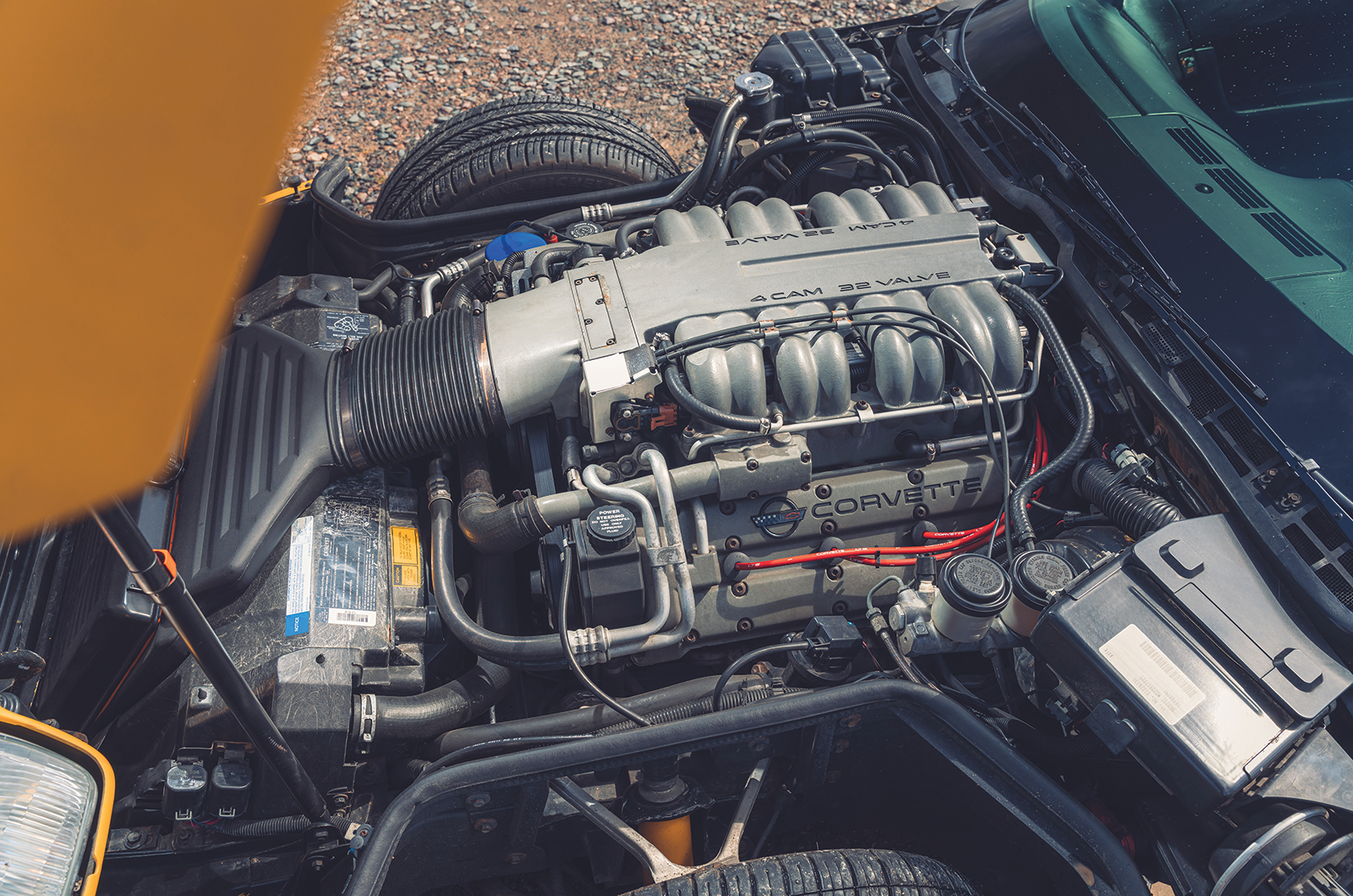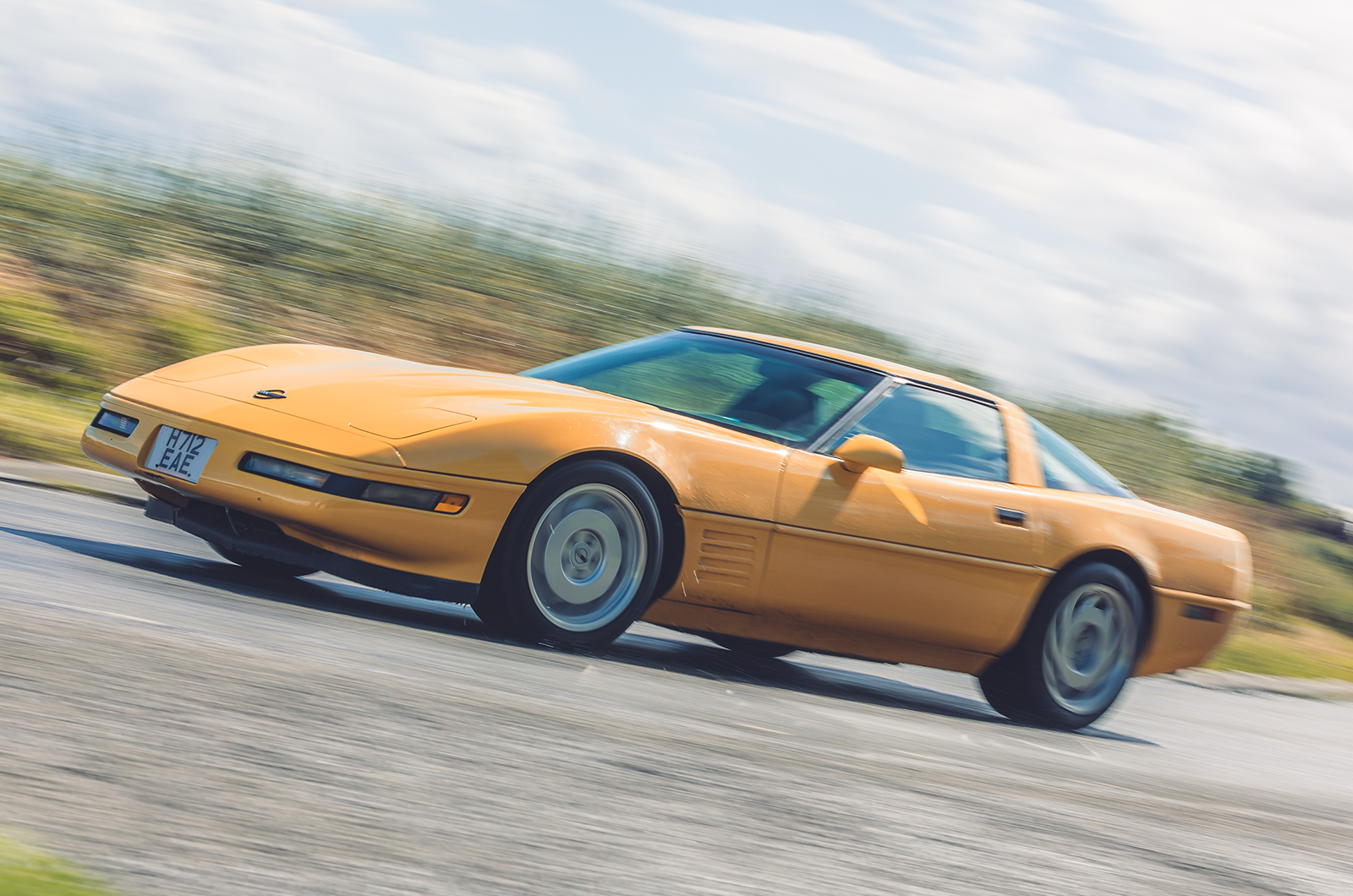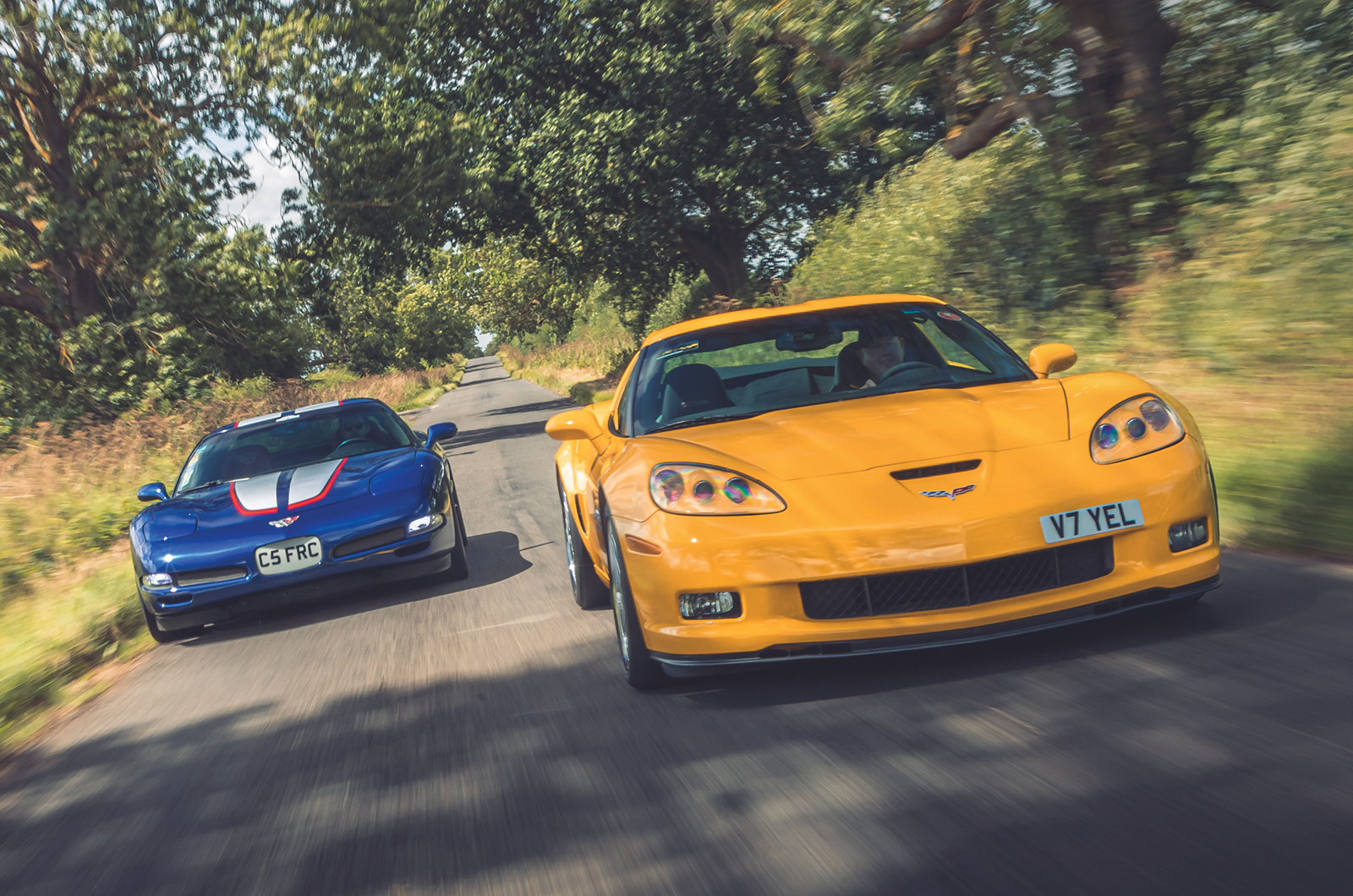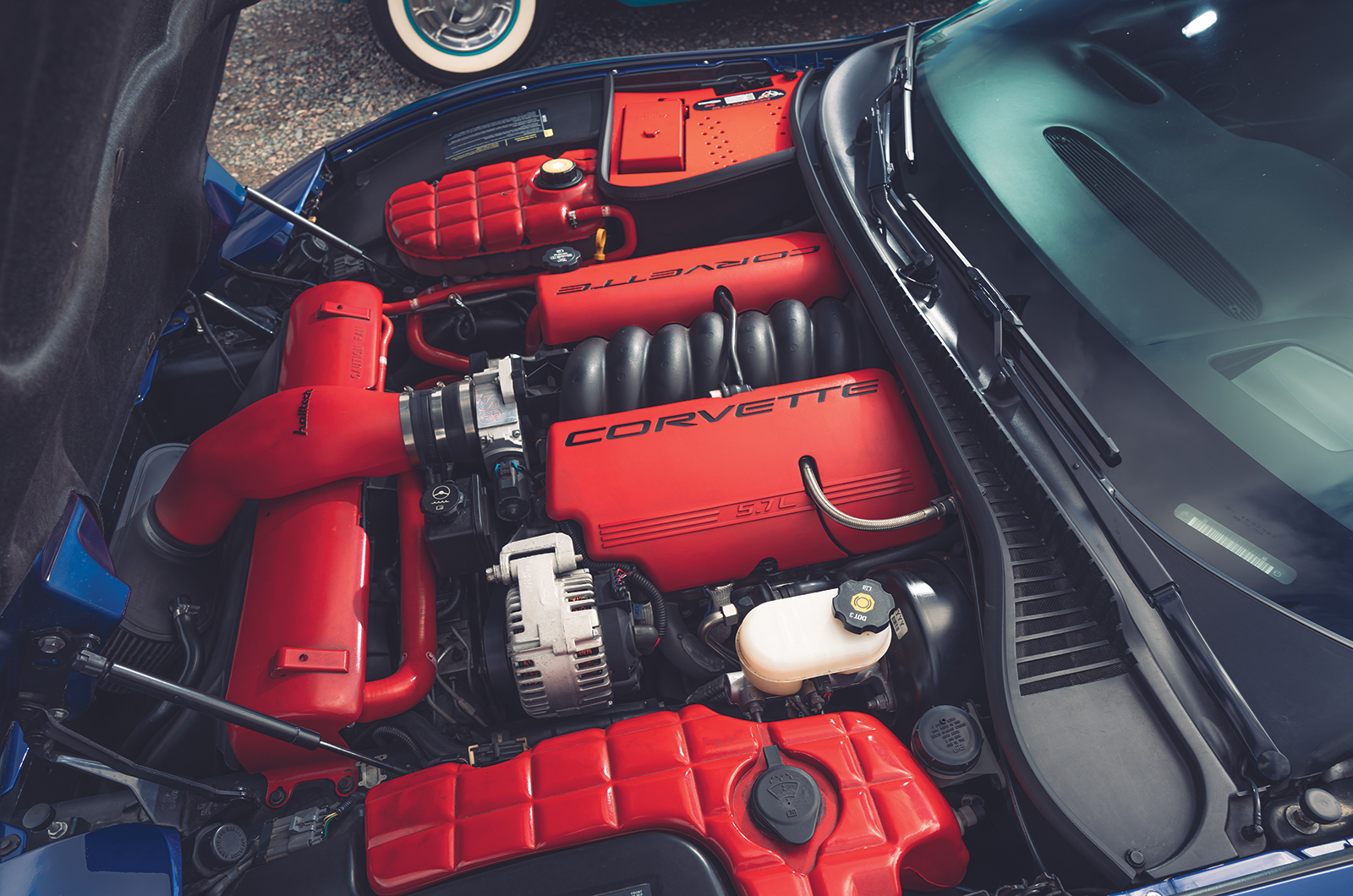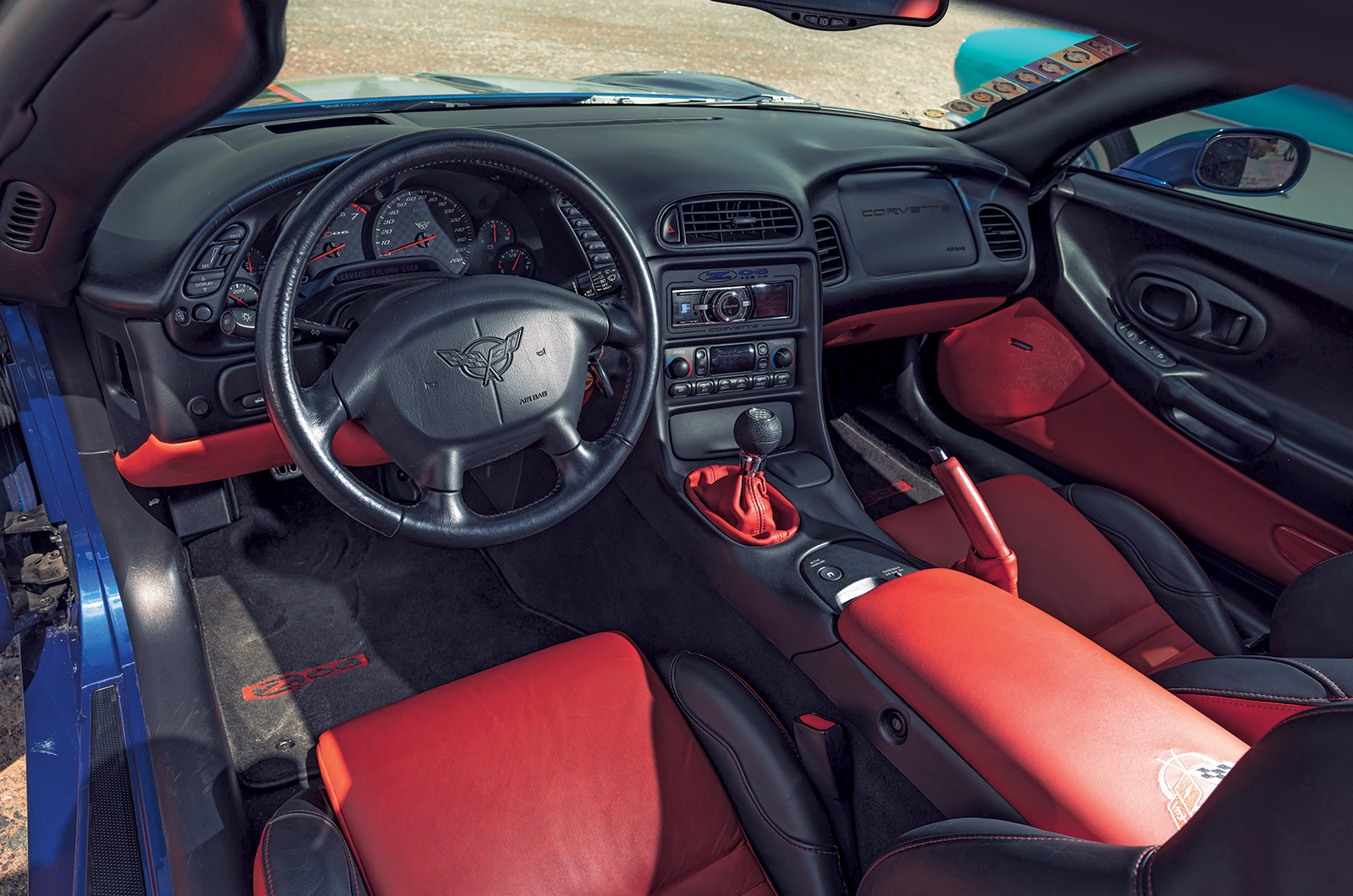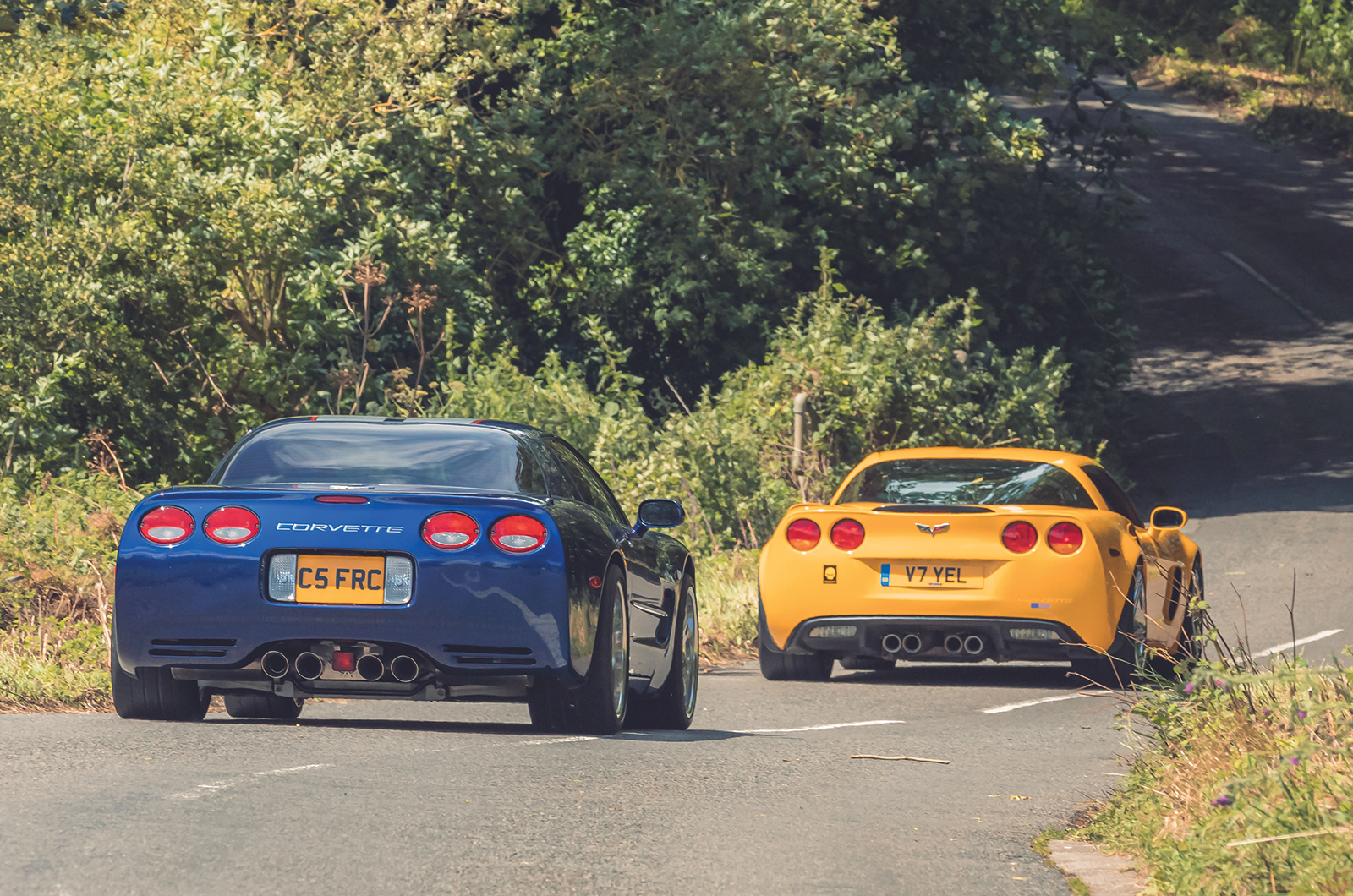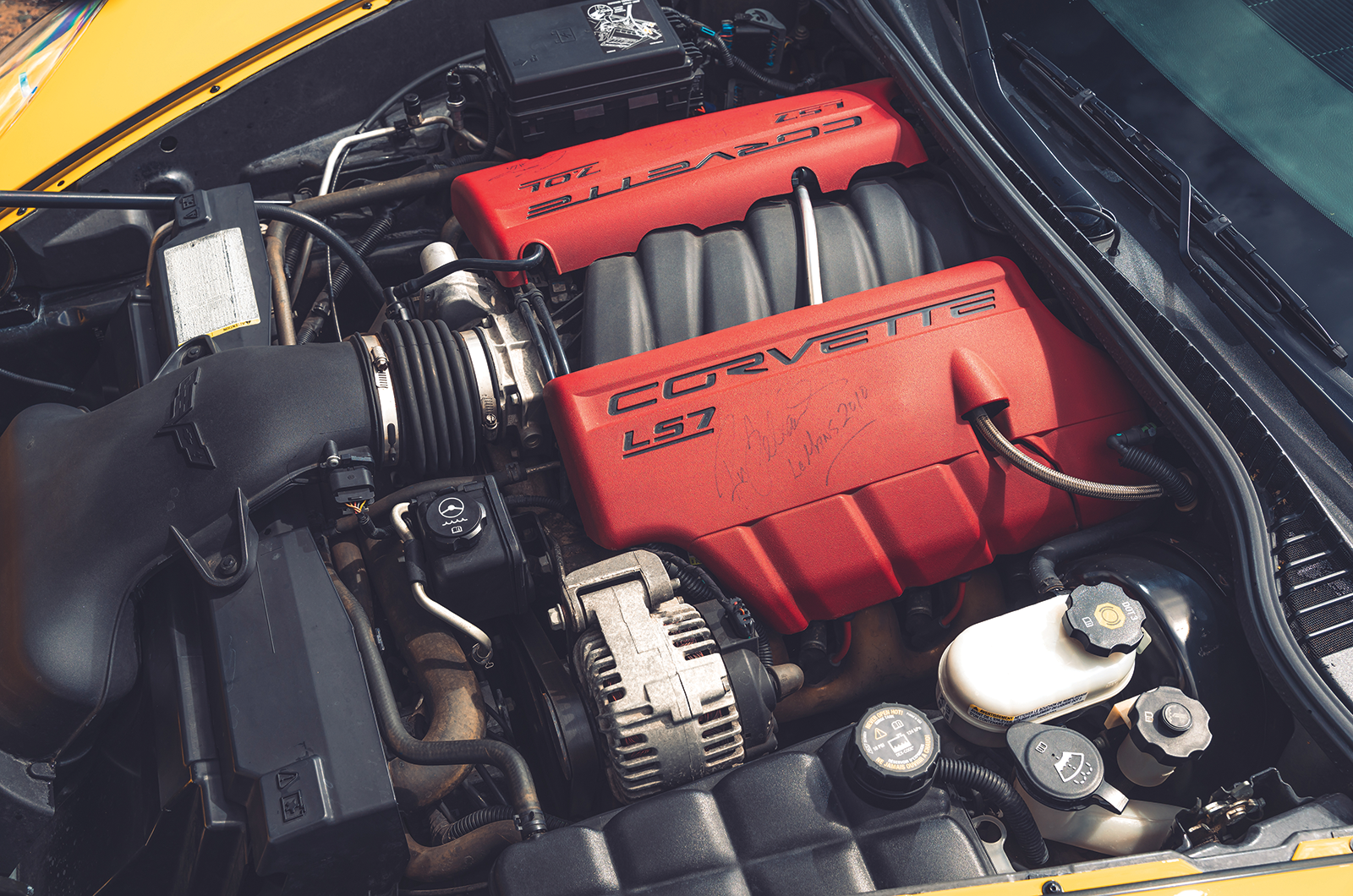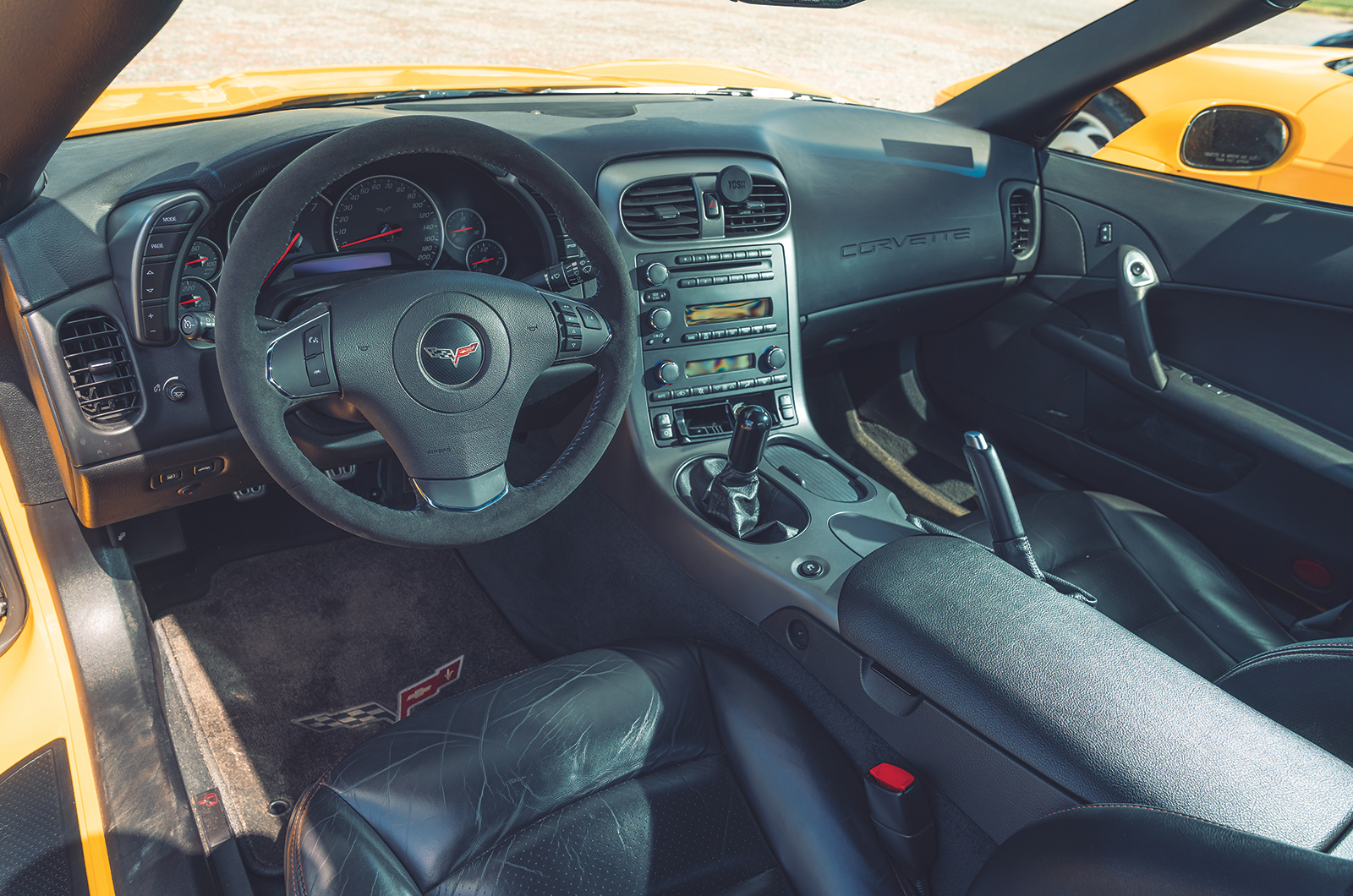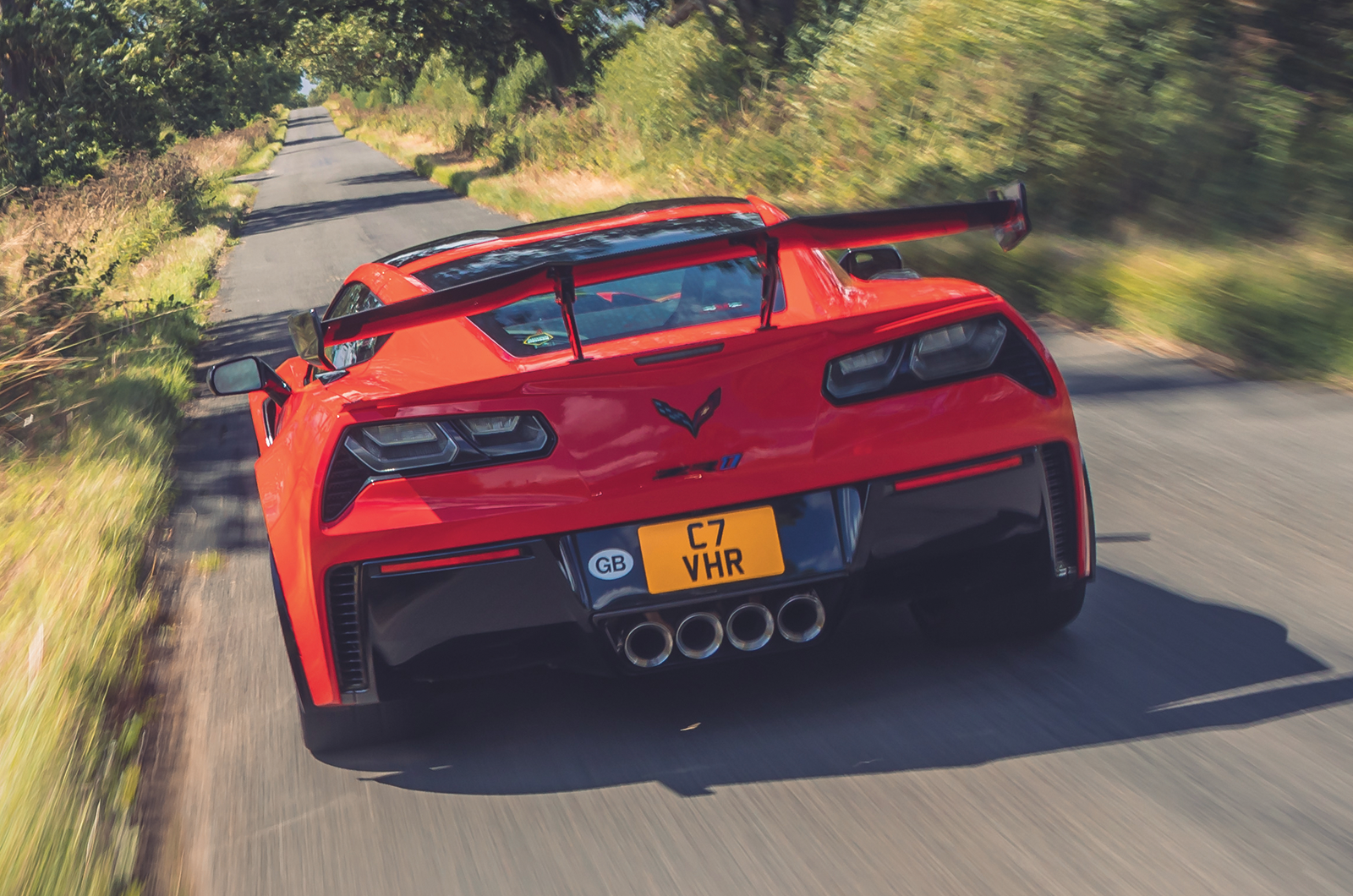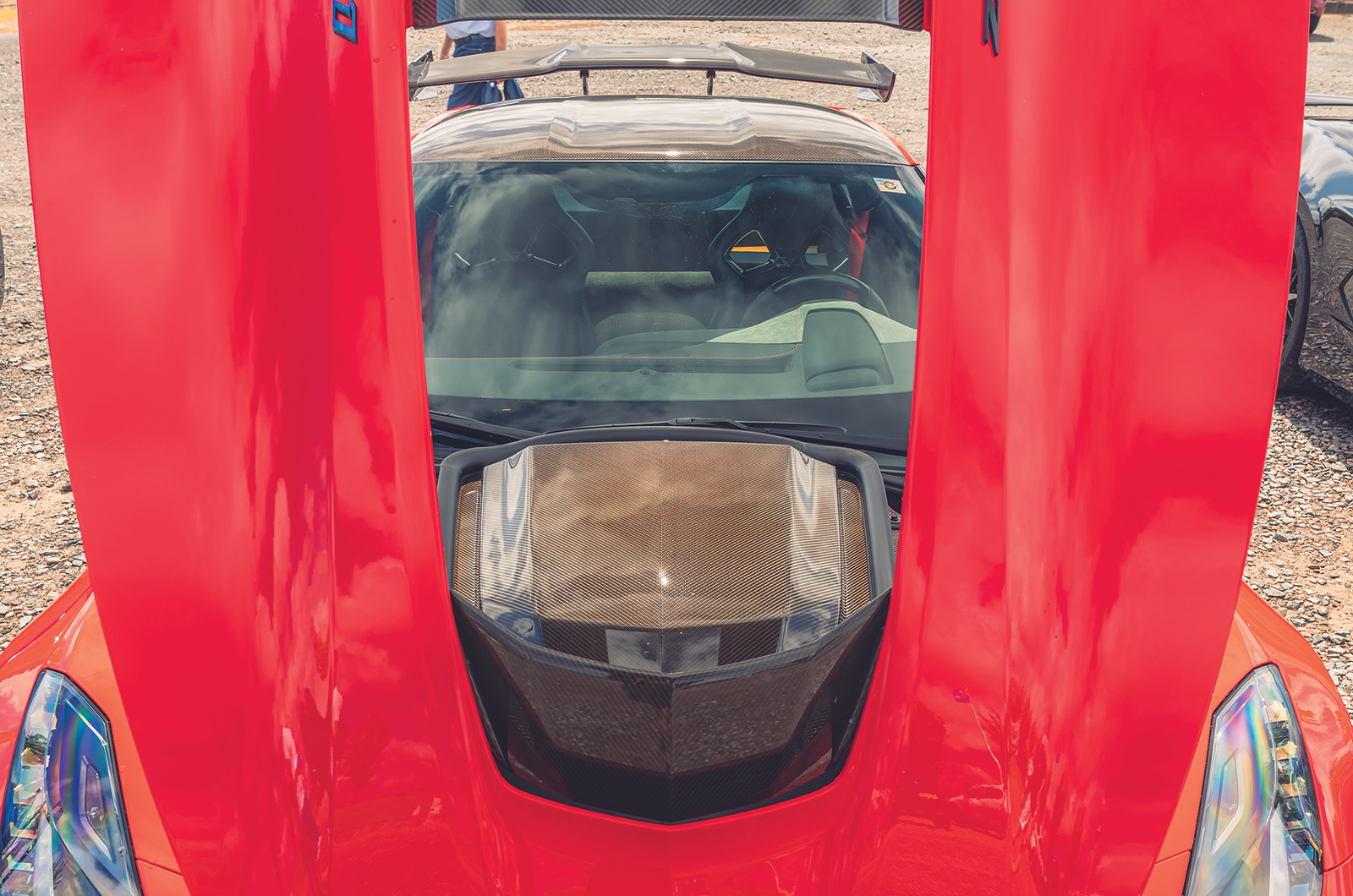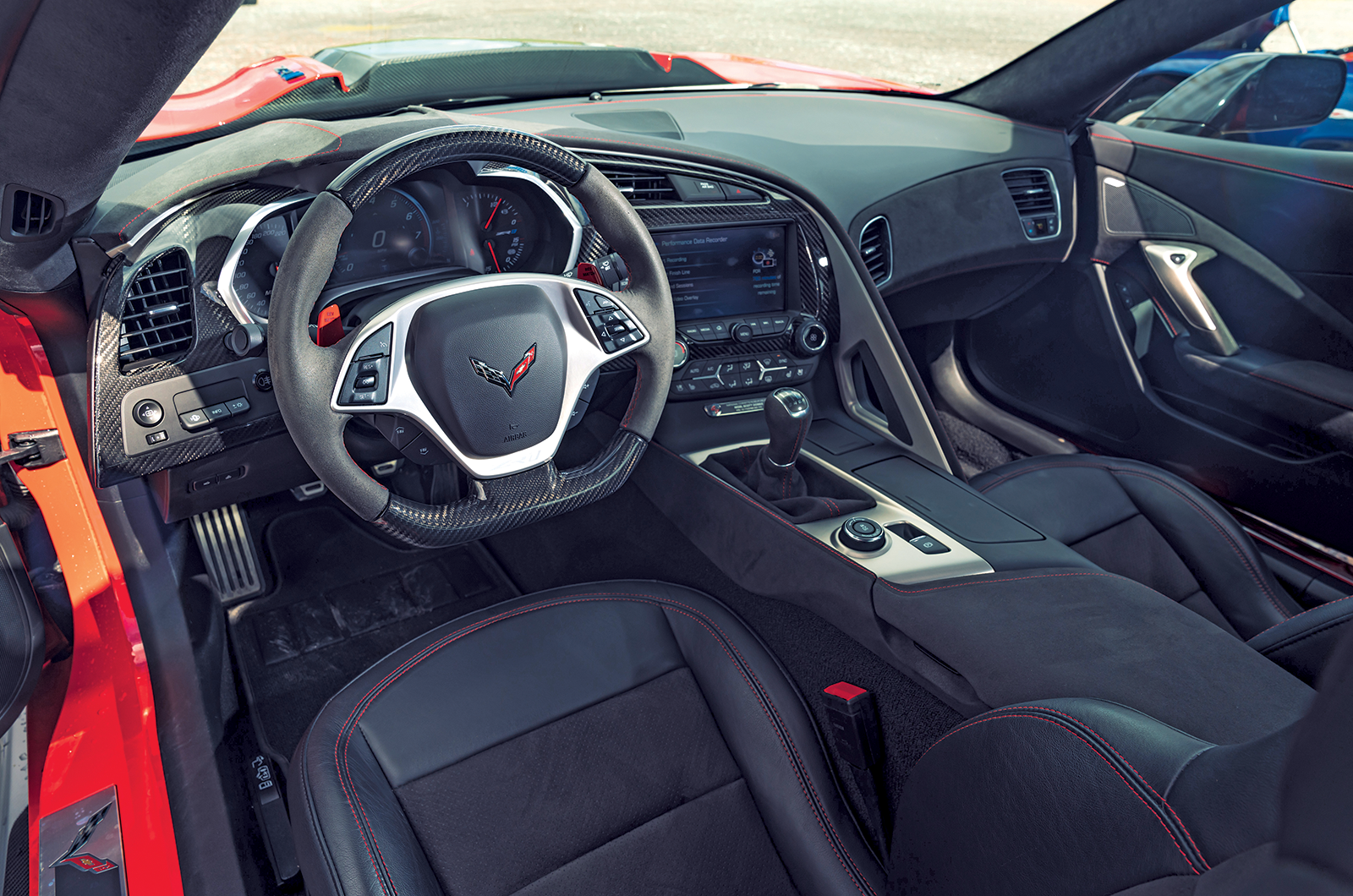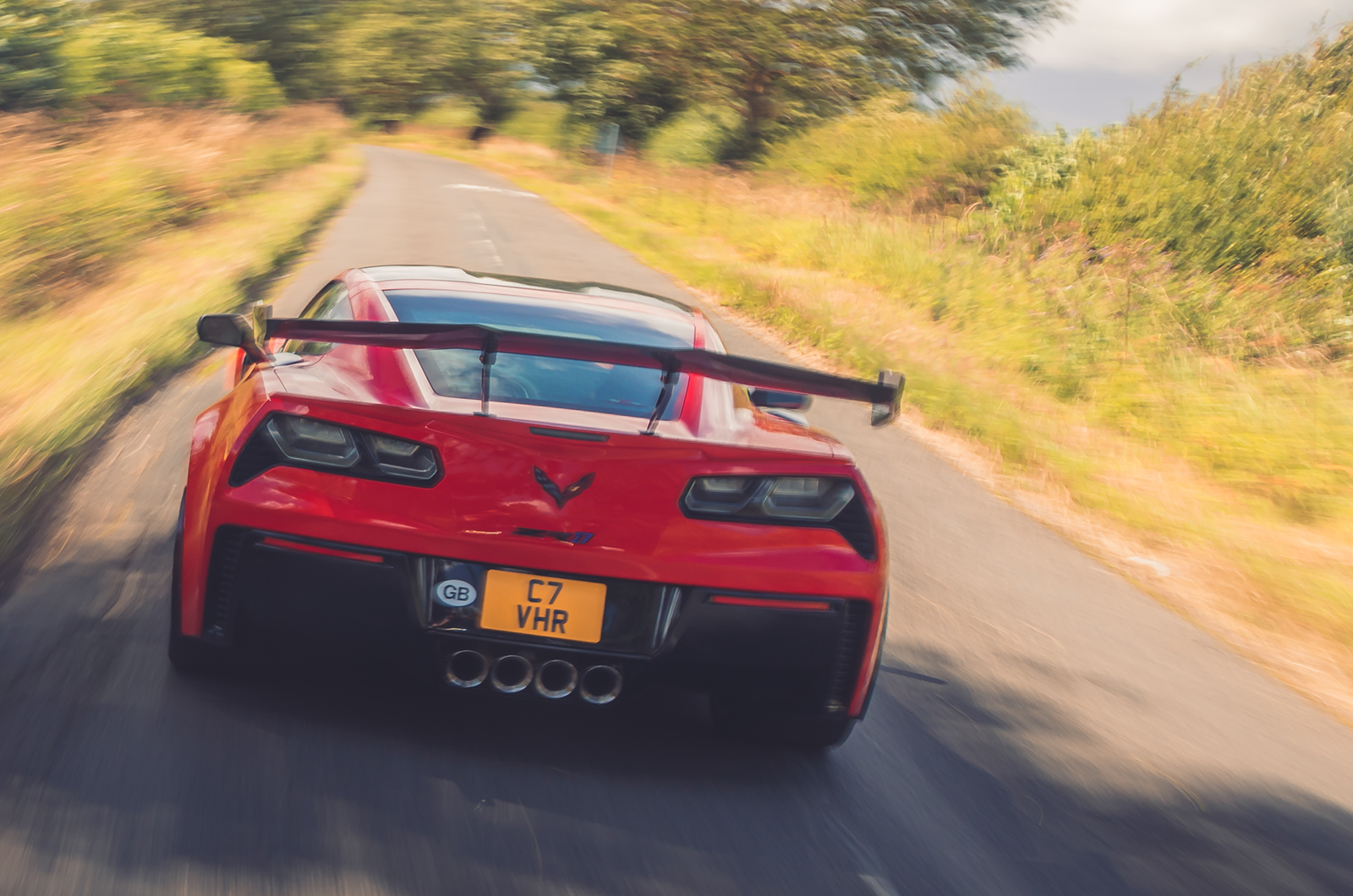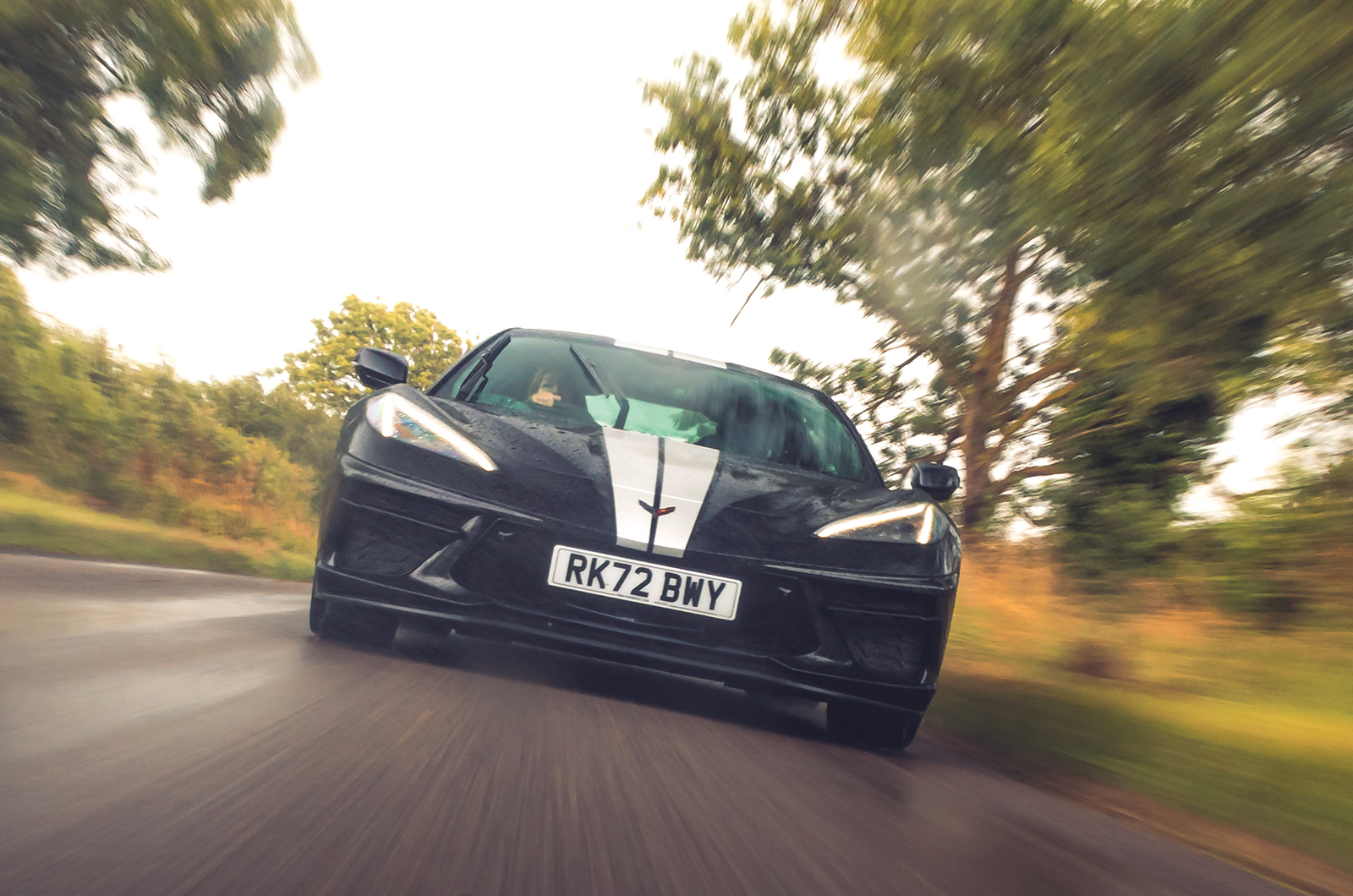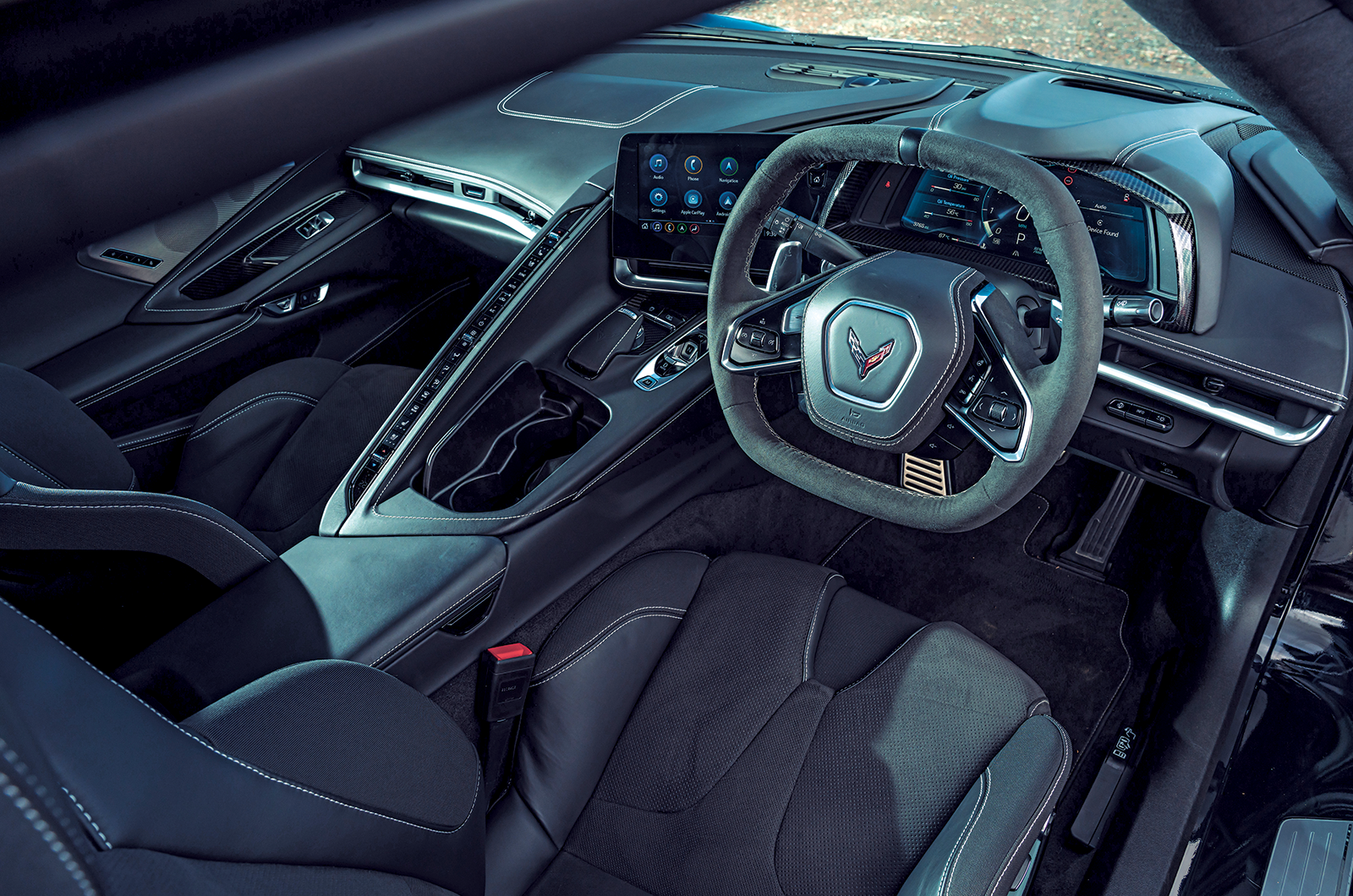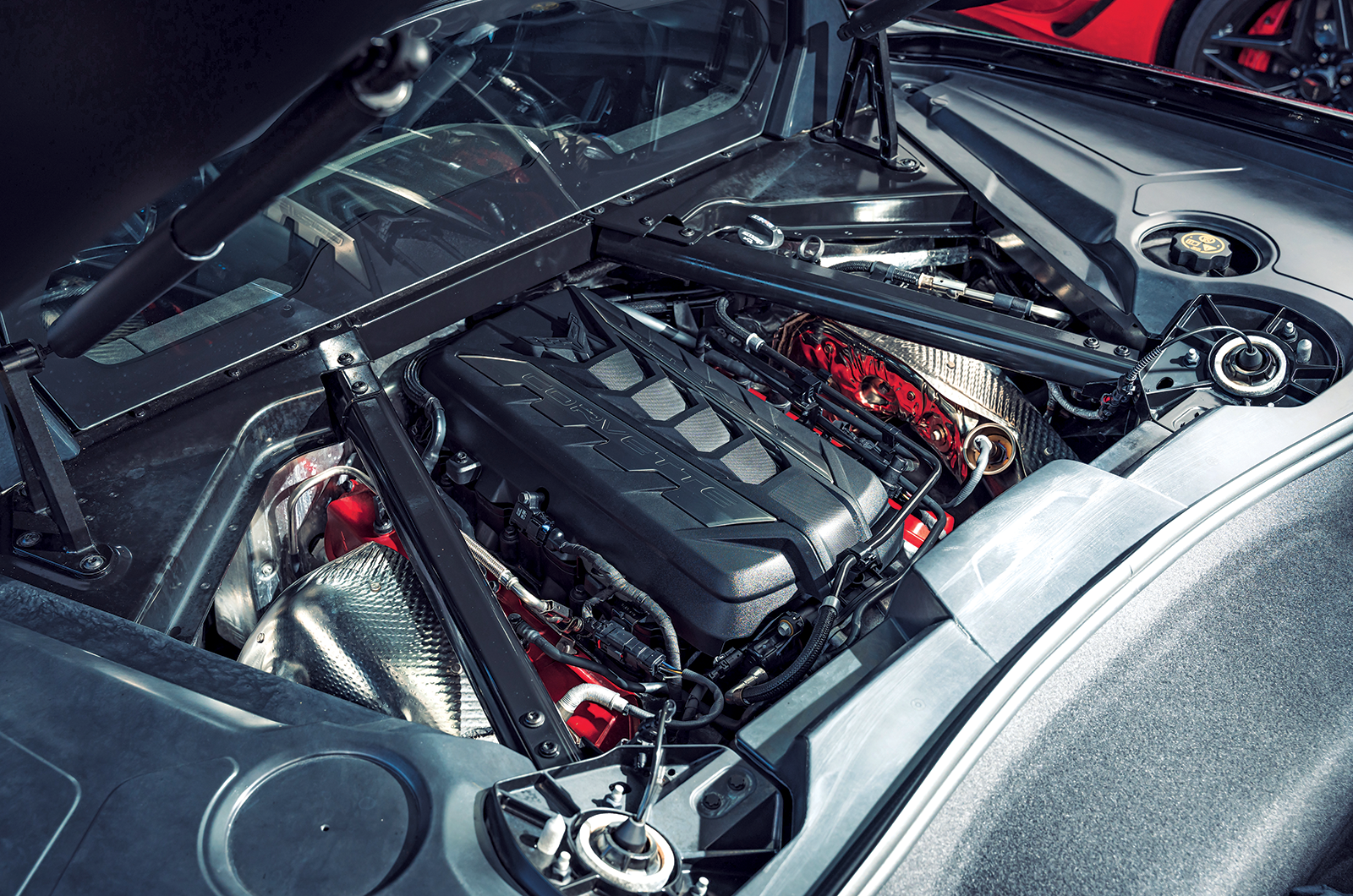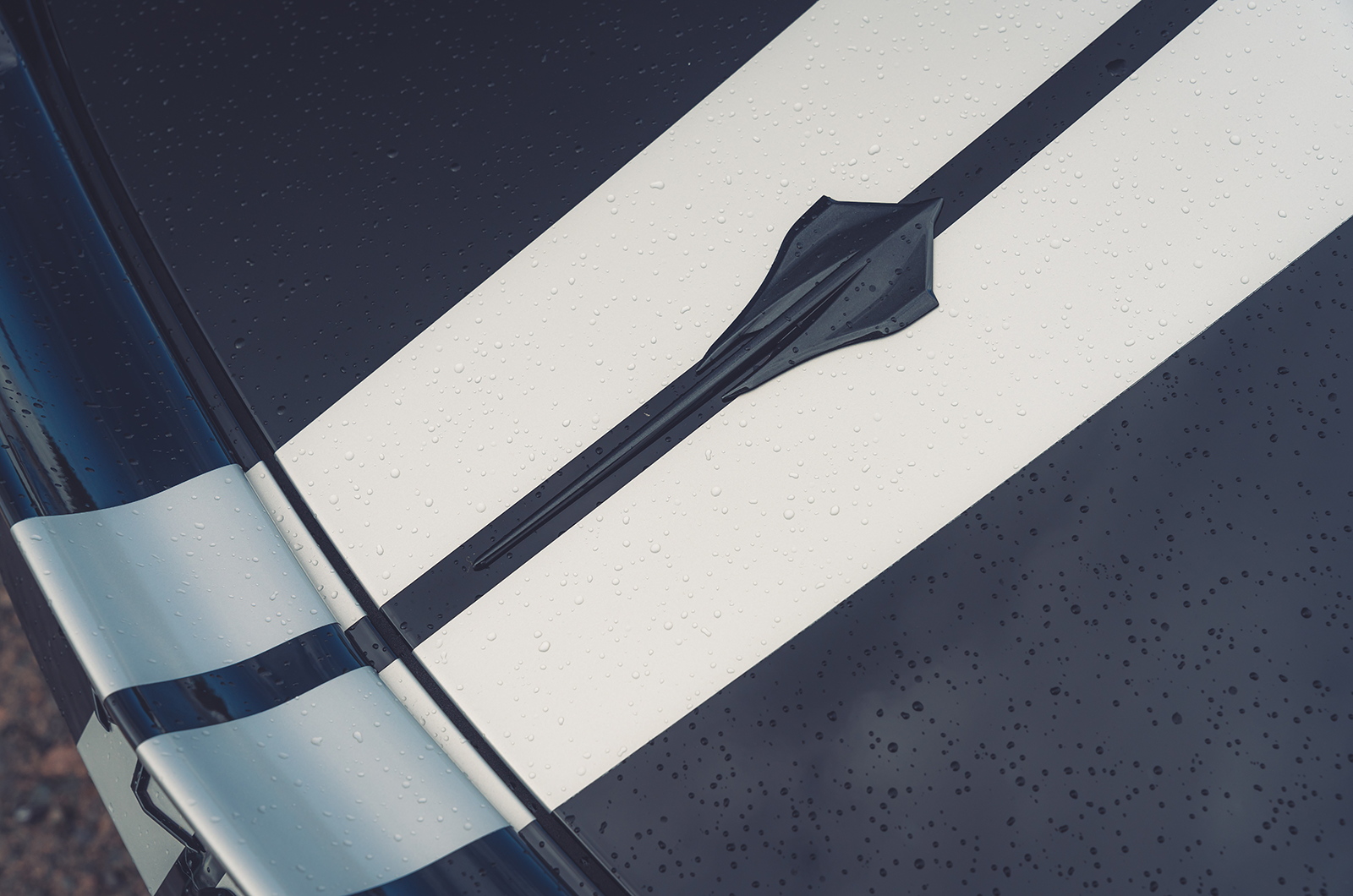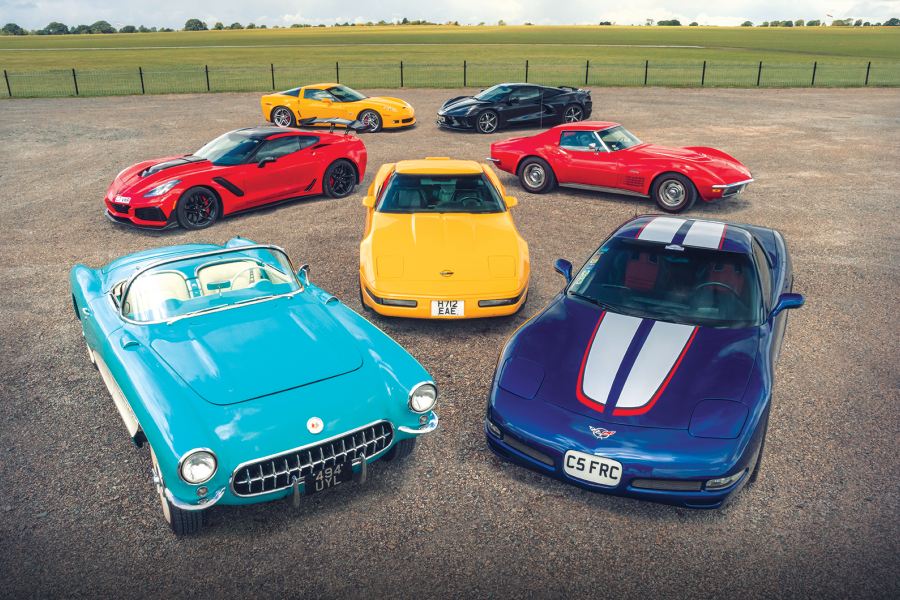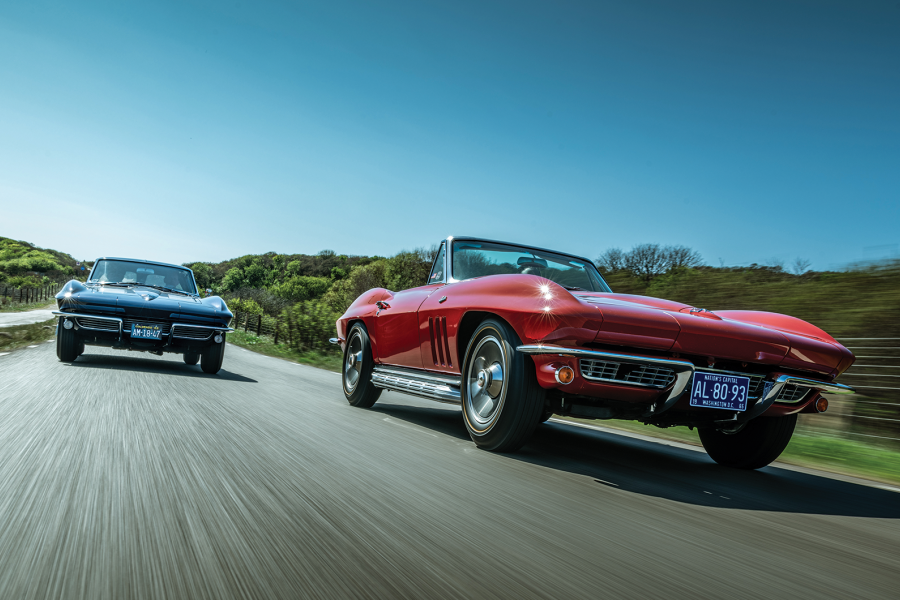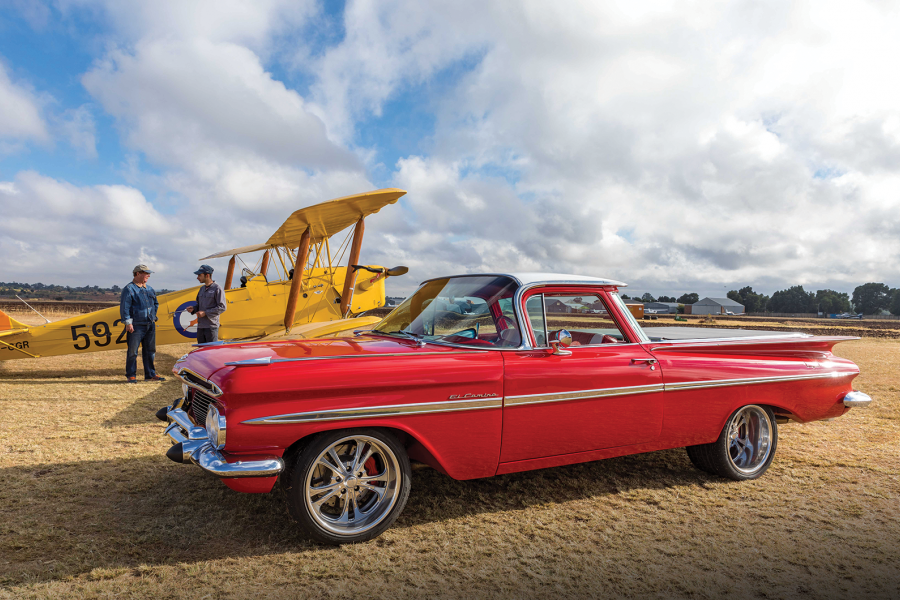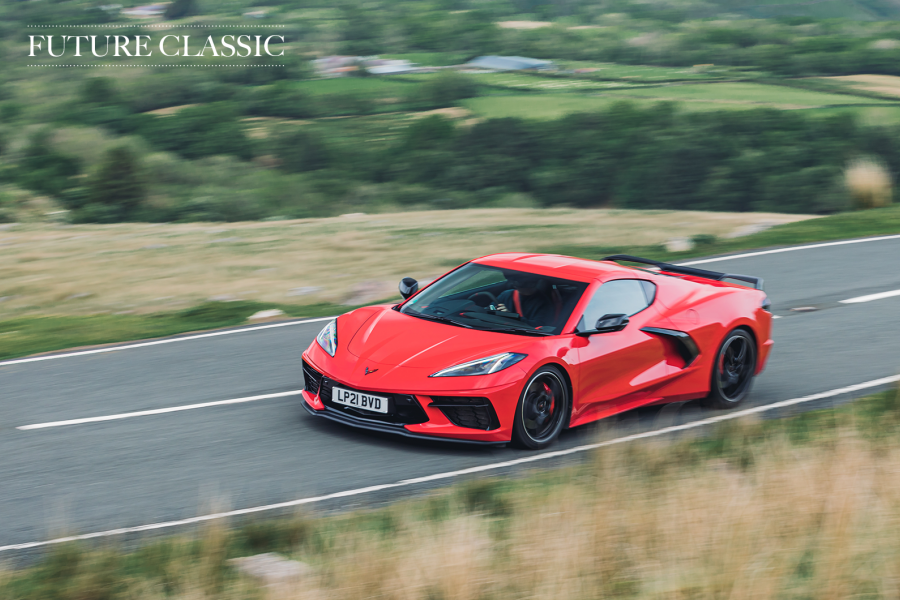The 1970s was an inauspicious decade for performance cars in the USA, however, with manufacturers struggling to meet new Federal emissions legislation.
Just a year after the LT-1 arrived, all Corvette engines suffered a drop in power figures – for the first time in the car’s history – of around 30bhp across the board.
A year later the LT-1 was killed off altogether as the Corvette began a downward spiral in outputs as the decade progressed. By 1980, the Corvette was being offered with just one engine, the 200bhp small-block.
It should be remembered that Chevrolet switched from gross to net power outputs in 1972, however, which makes the drop in output look worse on paper than it was in reality – but the reduced performance was nonetheless palpable.
Legislation also brought changes to the C3’s bodywork, with first front and then rear impact bumpers in 1973 and ’74 respectively, while the faltering American economy of the mid-’70s pushed GM into a cost-cutting drive in which Corvette variants were dramatically reduced.
The big-block went off the books in 1974, then the convertible option the following year. Sales actually boomed in the late ’70s, however, and the car’s all-time one-year production record of 53,807 was set in 1979.
But history has judged those early C3s as the last gasp of unadulterated American performance – and the LT-1 was the sportiest offering of those halcyon days.
‘The LT-1 was instantly the sporting driver’s choice, and noticeably more focused than the preceding two generations’
Chevrolet Corvette C3 Stingray LT-1
- Sold/number built 1970-’72/4977
- Construction glassfibre-reinforced plastic body with steel-reinforced cabin structure, over separate steel chassis frame
- Engine all-iron, ohv 5736cc V8, four-barrel carburettor
- Max power 370bhp @ 6000rpm (1970)
- Max torque 379lb ft @ 4000rpm (1970)
- Transmission four-speed manual, RWD
- Suspension independent, at front by double wishbones, coil springs rear three links, transverse leaf spring; telescopic dampers, anti-roll bar f/r
- Steering power-assisted recirculating ball
- Brakes discs, with servo
- Length 15ft 3in (4636mm)
- Width 5ft 9in (1753mm)
- Height 4ft (1214mm)
- Wheelbase 8ft 2in (2489mm)
- Weight 3285Ib (1490kg)
- Mpg 16
- 0-60mph 5.7 secs
- Top speed 122mph
- Price new $5192 (1970)
- Price now £30-80,000*
*Prices correct at date of original publication
Chevrolet Corvette C4 ZR-1
A grippy chassis and supple, Hethel-honed suspension helps marshal the C4 ZR-1’s huge power
Although it’s just a generation later, we have spanned two decades as we step from LT-1 to ZR-1. That reflects the lengthy durations of both these two incarnations of the Corvette and America’s ‘malaise era’.
A drastic change between two cars so far separated by time is to be expected, but there’s a sense that the ZR-1 is when the Corvette got a lot more serious.
The Chevrolet icon had sharpened its focus with every previous generation, but the process had been gently evolutionary.
With the C4, GM redeveloped almost every aspect, with a desire to create a sports car that could go toe-to-toe with European rivals not only in performance, but also handling.
Arkus-Duntov had hoped to replace the C3 after four or five years, this time with a mid-engined car to match the established exotic competition and put paid to any prestige Ford’s De Tomaso Pantera had over the Chevrolet.
But that car never arrived, despite Arkus-Duntov developing a prototype, and both he and his idea retired in 1975.
Development of a new, front-engined yet still very different Corvette began in 1977, riding high on the coffers brought in by the C3’s profitable Indian summer.
Initially intended for 1982 release, development delays and the move of the production line to Bowling Green, Kentucky, pushed the launch back to ’84.
The Chevrolet Corvette C4’s ’80s interior feels fragile
No 1983 model-year Corvettes were built, but the final C3s benefited from the fuel-injected engine, transmission, aluminium diff housing and composite leaf spring developed for the C4, so clearly much of it was finished by then.
The big change was to the chassis. Previous Corvettes had steel frames that, while lower in profile than most separate-chassis cars and increasingly integrated into the coachwork, still followed traditional body-on-frame logic.
For the new C4, GM introduced what it called a ‘uni-frame’: a skeleton cabin surround was the main load-bearing structure, to which a perimeter rail was attached.
The result was much improved stiffness and refinement but, to make the layout work, the car needed high sills.
That’s the first thing you notice when approaching the ZR-1: it is the lowest of the Corvette family and, combined with those high sills, it is by far the most difficult to get into – and that is perhaps the car’s single biggest flaw.
The reward, however, is a step-change in the feeling of rigidity from the C3. Every control, be it brakes, steering, gearshift or clutch, is considerably more modern than that of its predecessor.
Although a little heavier in feel than European contemporaries, each input is also far better resolved in a sporting sense.
The steering, for example, a rack-and-pinion set-up at long last, banishes the play found in all earlier Corvettes and, combined with the much smaller steering wheel, no longer feels like something to be wrestled with.
The doors and wings are unique to the ZR-1, to accommodate wider rear tyres
Where the new car didn’t improve on the C3, at least in base form, was its engine, carrying over the ‘Cross Fire’ small-block that made just 205bhp.
While the ‘tuned-port injection’ L98 of 1985 improved things with 230bhp, eventually creeping up to 250bhp, there wasn’t a proper high-performance option other than tuner Reeves Callaway’s low-volume, turbocharged rocketships until the ZR-1 of 1990.
A mass-produced turbocharged small-block was considered for this halo version, but a modern multi-valve, quad-cam V8 was the best way forward – although GM had neither development nor production capacity to create such an engine for a niche model.
Enter the unlikely input of the recently acquired Lotus, and a rare overlap on the Venn diagram of Detroit and Norfolk.
Hethel’s qualifications for the job were self-evident, because the firm was already getting 350bhp out of a 4-litre, 32-valve, quad-cam V8 it was working on for the Esprit.
Fitting the Lotus multi-valve heads directly to a small-block didn’t work out, so a completely new engine, the LT-5, was built, while Hethel also helped with the car’s chassis development, which took the existing Z51 optional handling package from the regular ’Vette and tweaked it in typical Lotus fashion, with more supple springs and anti-roll bars.
The new LT-1 engine Lotus put together was thoroughly exotic: all-aluminium, two cams per bank, an 11:1 compression ratio and four valves per cylinder. To this day it arguably remains the most technically sophisticated motor fitted to a Corvette.
Adding a further twist to the story, the contract to manufacture the V8s went to Mercury Marine, one of GM’s biggest customers of crate units, but also an engine-builder in its own right.
The C4’s Lotus-developed all-aluminium V8 is good for 375bhp
From the driver’s seat, however, the ZR-1 belies its disparate development story. A turn of the ‘valet key’ on the dash literally unlocks another level of performance as it activates the second set of intake valves.
It’s in the upper half of the rev range where you feel that: it not only spins to higher revs than the standard small-block, but the acceleration also keeps coming as you get towards the top of the powerband where the standard model reaches a plateau.
Quite simply, it pulls harder, both at the top of every gear and at higher speeds. The ZR-1 corners in a pretty similar fashion to a standard C4, but that’s an achievement in itself, given all the extra grunt on tap.
An extra 2.5in of rear tyre width increased grip in line with the additional power, while the Lotus engineers have found a ‘Goldilocks’ zone in the suspension stiffness, lying somewhere between the over-soft standard set-up and the over-firm Z51 optional handling package.
The main problem with the ZR-1 is that only 6939 were made. The price wasn’t far from double that of a normal C4, and a 1992 update that took the regular car to 300bhp gave even less incentive to stump up the extra cash.
Nicknamed internally ‘The King of the Hill’, the ZR-1 marked a real return to form for the Corvette. While the car still had a slightly raw edge, be it in the hefty controls or the fragile-feeling interior, it took the fight back to its European rivals with serious power and finely tuned chassis dynamics.
And, thanks to that high-tech quad-cam V8, it did so in a way the ’Vette had never done before – or indeed since.
‘The “valet key” unlocks another level of performance. Quite simply, it pulls harder at the top of every gear, and at higher speeds’
Chevrolet Corvette C4 ZR-1
- Sold/number built 1990-’95/6939
- Construction glassfibre-reinforced plastic body over steel skeleton chassis
with perimeter rail
- Engine all-alloy, dohc-per-bank 5727cc V8, fuel injection
- Max power 375bhp @ 6200rpm
- Max torque 370lb ft @ 4500rpm
- Transmission six-speed manual, RWD
- Suspension independent, at front by unequal-length wishbones rear five links; transverse composite leaf spring, tubular dampers, anti-roll bar f/r
- Steering power-assisted rack and pinion
- Brakes vented discs, with servo and ABS
- Length 14ft 9in (4506mm)
- Width 6ft 1in (1859mm)
- Height 3ft 11in (1189mm)
- Wheelbase 8ft (2443mm)
- Weight 3466Ib (1572kg)
- Mpg 22
- 0-60mph 4.9 secs
- Top speed 175mph
- Price new $58,995 (1990)
- Price now £30-60,000*
*Prices correct at date of original publication
Chevrolet Corvette C5 Z06 Le Mans and Corvette C6 Z06
Chevrolet engineers developed a brand-new design for the Corvette C5 (left), which morphed into the C6
The ambitions and spirit of the C5 very much followed those of its predecessor, but the Corvette’s engineers had learned enough to realise that to improve it across the board in all the ways they wanted to, they had to start again.
Thus, the C5 became the first Corvette to be a clean-sheet design: the engine, chassis, transmission and body were all new.
The steel skeleton around the cabin with attached perimeter rails was similar to that of the C4, but an extremely rigid central tunnel now formed the base of the entire frame, providing a huge increase in the stiffness of the chassis – by 450%.
That alone is the single most noticeable difference between this Z06 and the C4 ZR-1. Gone is the flex as the car moves down the road; instead, the Z06 feels unshakable.
This rigidity allows the C5 to do everything that bit better, be it cornering, braking or putting its power down. It had benefits for refinement, too, where the C4 still fell short of its exotic European rivals.
With the body moving far less, and Chevrolet having designed-out 1500 parts from the car, many of those creaks and rattles were banished.
By the turn of the century, the American auto industry had left the ‘malaise era’ behind and big horsepower was back.
The 405bhp LS6 engine of this Chevrolet Corvette C5 Z06 Le Mans
The standard C5 launched with the new 350hp LS1 V8, a completely redesigned, all-aluminium small-block that, unlike the old ZR-1, retained an easy-to-maintain overhead-valve set-up.
If you recognise the name, it’s because the light, simple and compact LS1 has become the engine swap of choice for countless cars ever since.
The C5 needed a high-performance version that truly replaced the ZR-1, however, which is how we get to the Z06.
With a boosted compression ratio, high-flow heads and an aggressive cam, the LS6 offered 385bhp on its 2001 debut; a year later power increased to 405bhp, matching the output of the final versions of the C4 ZR-1.
The hardtop C5 body, rather than the targa-top coupe or convertible, was chosen for what Chevrolet positioned as its out-and-out sports car without any compromises.
With firmer suspension, too, the Z06 was the first Corvette capable of generating cornering forces of more than 1g – and it still feels planted and flat.
There is a touch of snappiness, though, and where the loose back ends of previous generations felt almost playful on narrow British back-roads, the C5’s higher limits demand more respect.
The Le Mans edition of the C5 celebrated class victories at the 24-hour race in 2001, 2002 and 2004
No greater point could be made of the C5’s dynamic abilities than its stellar race career, with class victories at the 2001, 2002 and 2004 Le Mans 24 Hours going far beyond anything previous Corvettes had achieved.
By way of celebration, Chevrolet created the final-year Le Mans Commemorative Edition, which is what we have here with us today.
Beyond the striking paintwork, it added a carbonfibre bonnet and all of the goodies from the previous year’s 50th Anniversary model.
With the C6, Chevrolet was able to replace a Corvette model in a timely manner for the first time since the 1960s, as it repeated the trick of the C3 by rebodying the previous-generation ’Vette.
The chassis remained the same and, while the bodywork was all-new, its lineage was clear: essentially a C5 minus the pop-up headlights and with some more angular surfacing.
Less easy to spot was that the C6 was also slightly narrower and sported significantly shorter overhangs, making the car more taut both to look at and to drive.
The biggest news was to be found under the bonnet, however, where the small-block LS3 V8 grew to a whopping 6 litres in capacity, taking displacement above 5.7 litres for the first time since 1974 and making the entry-level C6 almost as quick as the old Z06 flagship.
‘The big news was under the bonnet. The small-block V8 grew to 6 litres, making the standard C6 almost as quick as the old Z06’
The new Z06, therefore, needed to come up with some fresh tricks, and so extensive were the modifications that the performance variant wouldn’t be released for another two years after the debut of the standard car.
Never before had a performance iteration diverged so far from the base model.
The 2006 Z06 swapped its steel perimeter frame for aluminium, and many of the body panels – widened to accommodate much larger wheels – were carbonfibre.
Bigger brake discs and six-pot front calipers provided greater stopping power, too, which was made all the more necessary by the new LS7 V8.
Expanded with a larger bore and stroke, the LS7 displaced 7 litres – or 427cu in, recalling the big-blocks of the 1960s. This made it the largest engine fitted to a Corvette since 1974, and it hasn’t been trumped in the years that have followed.
It wasn’t just about displacement, though: highly developed heads borrowing from the Corvette’s racing experience used titanium componentry to allow the LS7 to rev to 7100rpm – a hitherto unseen figure for such a large-capacity pushrod V8.
The Corvette C6’s LS7 V8 gave a boost to 505bhp
With 505bhp, a huge 470lb ft of torque and an 88kg weight saving, the Z06 had entered supercar territory.
What’s almost as impressive as the immense thrust of the Z06, however, is that it is still as driveable as any other Corvette on the road.
As with the C5, though, there’s always a feeling that the rear tyres could break away should the driver be truly reckless, but it’s remarkable just how approachable the Z06’s performance is, even on tight British lanes.
Within yards, the C6 creates instant grins, made all the more joyful by the constant but not oppressive V8 bellow. The springing remains comfortable, too, while the spacious interior is wrapped in leather and cooled by automatic climate control.
If the Z06 had graduated from America’s sports car to America’s supercar, it achieved it with a typical refusal to accept discomfort.
And the C6 wasn’t quite finished there, because 2009 brought the return of the famed ZR1 moniker, adding a new third model into the Corvette range.
With even greater use of carbonfibre and the model’s first supercharger (albeit attached to a 6.2-litre engine, rather than the Z06’s 7-litre unit), it was the first Corvette to break the 200mph barrier.
The hefty centre tunnel gave a significant stiffness boost in both the C5 and C6 Corvettes
Chevrolet Corvette C5 Z06 Le Mans
- Sold/number built 2001-’04/28,338 (Z06)
- Construction glassfibre-reinforced plastic body over steel skeleton chassis with central backbone and perimeter frame
- Engine all-alloy, ohv 5665cc V8, fuel injection
- Max power 405bhp @ 6000rpm
- Max torque 399lb ft @ 6000rpm
- Transmission six-speed manual transaxle, RWD
- Suspension independent, by double wishbones, transverse composite leaf spring, telescopic dampers and anti-roll bar f/r
- Steering power-assisted rack and pinion
- Brakes vented discs, with servo and ABS
- Length 15ft (4565mm)
- Width 6ft 2in (1869mm)
- Height 4ft (1211mm)
- Wheelbase 8ft 9in (2655mm)
- Weight 3117Ib (1414kg)
- Mpg 25
- 0-60mph 4.7 secs
- Top speed 171mph
- Price new $56,720 (2004)
- Price now £20-40,000 (Z06)*
Chevrolet Corvette C6 Z06
- Sold/number built 2006-2013/27,995 (Z06)
- Construction glassfibre-reinforced plastic and carbonfibre body, steel skeleton chassis, central backbone, aluminium perimeter frame
- Engine all-alloy, ohv 7008cc V8, fuel injection
- Max power 505bhp @ 6300rpm
- Max torque 470lb ft @ 4800rpm
- Transmission six-speed manual transaxle, RWD
- Suspension independent, by double wishbones, transverse composite leaf spring, telescopic dampers and anti-roll bar f/r
- Steering power-assisted rack and pinion
- Brakes vented discs, with servo and ABS
- Length 14ft 7in (4460mm)
- Width 6ft 4in (1929mm)
- Height 4ft 1in (1245mm)
- Wheelbase 8ft 10in (2686mm)
- Weight 3131Ib (1420kg)
- Mpg 20
- 0-60mph 3.9 secs
- Top speed 198mph
- Price new $65,800 (2006)
- Price now £20-40,000 (Z06)*
*Prices correct at date of original publication
Chevrolet Corvette C7 ZR1
This Chevrolet Corvette C7 ZR1’s rear wing, from the ZTK track performance package, is far from subtle
Like many of its predecessors, the C6 had a longer shelf life than initially intended.
Just as the development of its successor began to get serious, including significant plans to finally make a mid-engined ’Vette, the 2008 financial crisis hit.
Bankruptcy struck The General, and Corvette development had to be both postponed and scaled back in ambition.
But while the mid-engined model was off the cards for now, Chevrolet still declared the C7 ‘all-new’ when it finally arrived in 2013, and it wasn’t just a marketing spiel.
The chassis was similar in its basic design, but strengthened and lightened, with all models now constructed from aluminium.
The engine, the 455bhp Gen 5 LT1, borrowed a lot from its Gen 4 LS3 predecessor, but added direct injection among a host of other improvements.
The body was redesigned, as you’d expect; it was still the familiar Corvette shape, but with much greater attention paid to aerodynamics, and with carbonfibre making up the roof, bonnet and numerous underbody sections.
The C7 ZR1’s huge bonnet bulge can hamper the view out for shorter drivers
All together, it was clear that Chevrolet had not reinvented the wheel with the C7, but it was almost entirely new.
GM proudly stated that only two major parts were interchangeable between the seventh-generation car and the C6: a roof latch and the cabin air filter.
To the disappointment of not a single Corvette fan, the C7 followed its predecessors’ lead when it came to its different models, too.
That meant a Z06 in 2015, which was lower, wider and more powerful thanks to a 6.2-litre supercharged V8 pumping out 650bhp. Then the mid-range Grand Sport in 2017 and finally, for the C7’s last year, the return of the ZR1.
The Z06 had stolen the previous ZR1’s supercharging trick, so, to give the model the boost in power it needed, the supercharger and its intercooler were enlarged, while a second set of injectors allowed more accurate fuelling to yield a massive 755bhp.
With it, the Corvette had become a bona fide hypercar, at least in terms of acceleration, cracking the 3 secs 0-60mph barrier – and all for $120,000 or so.
Although this particular ZR1, equipped with the ZTK track performance package that includes a massive rear wing, looks like a bit of a hooligan, it remains approachable on the road.
The 755bhp C7 ZR1 was Chevrolet’s last Corvette offered with a manual gearbox
Like the C5 and C6, it resists being intimidating despite the immense pace on offer. There’s a comfort and ease in the controls that prevent it from feeling unwieldy or scary.
Its lineage to those two predecessors is obvious, but it simply feels sharper and more modern. The steering is quicker and more direct, and the uprated suspension is even better at smothering bumps.
The gearbox – now with seven speeds – is tighter, too, allowing for rapid progress through the ratios, which fly by as soon as the throttle is depressed with any weight.
On tight country roads there isn’t room to push the ZR1’s high limits of adhesion, but even so there is a clear sense that the rear will break first.
Much firmer seating in this ZR1, again an optional extra, adds to the feeling that this is a serious performance car.
A one-year-only model from the second shortest-lived of all Corvettes, the C7 ZR1 is already being tipped as a future classic just a few years after it went off sale.
As the ultimate evolution of the last front-engined model, and the last offered with a manual gearbox, there is a sense in the ZR1 of the old-school ’Vette coming to an end with a roaring crescendo.
Despite its performance, the Corvette C7 ZR1 is comfortable and easy to drive
Chevrolet Corvette C7 ZR1
- Sold/number built 2019/2953 (ZR1)
- Construction glassfibre-reinforced plastic and carbonfibre body, aluminium skeleton chassis with central backbone and aluminium perimeter frame
- Engine all-alloy, ohv 6162cc V8, Eaton supercharger, fuel injection
- Max power 755bhp @ 6300rpm
- Max torque 715lb ft @ 4400rpm
- Transmission seven-speed manual transaxle, RWD
- Suspension independent, by double wishbones, transverse composite leaf spring, telescopic dampers, anti-roll bar f/r
- Steering variable-ratio power-assisted rack and pinion
- Brakes drilled carbon-ceramic Brembo discs, with servo and ABS
- Length 15ft (4567mm)
- Width 6ft 5in (1966mm)
- Height 4ft 1in (1232mm)
- Wheelbase 8ft 11in (2710mm)
- Weight 3560Ib (1614kg)
- Mpg 18
- 0-60mph 2.9 secs
- Top speed 212mph
- Price new $122,095
- Price now £170-220,000 (ZR1)*
*Prices correct at date of original publication
Chevrolet Corvette C8 Stingray 70th Anniversary
The C8 is the first right-hand-drive Chevrolet Corvette
Yep, they finally did it. He never lived to see the day, but Arkus-Duntov’s wish – indeed, his parting statement upon his retirement – to see the Corvette’s engine moved to behind the driver came to fruition at last in 2020.
There was quite some fear of how serial Corvette buyers would react to a mid-engined model, but the performance case was clear.
Yet more power added into the existing front-engined configuration would only really achieve more wheelspin, certainly in the high-performance models. The Corvette needed more traction.
Rumours of revolution preceded the C8’s unveiling, with talk of dual-clutch automatic transmissions, overhead cams and even V6 power.
In the end, only the first proved correct. The dual-clutch ’box is capable of lightning-quick shifts and, thanks to a simply engaged manual mode, is easily controlled.
Corvette chief engineer Tadge Juechter also pointed to the rigidity and packaging benefits gained by not having to make space for shift linkages.
The Corvette C8 Stingray’s square steering wheel isn’t its only surprise
The latter was probably the real driver because, while more and more autos were being bought – 78% of C7s in its final year – the number of manuals sold was still considerable.
For many, not offering the Corvette with a ‘stick shift’ for the first time since 1955 was more controversial than anything else about the new car.
And the changes were thorough: instead of a transverse leaf, the C8 was sprung by coil-overs all round, while the perimeter rails that had run down every Corvette’s sills since the C4 were gone and there was a dry-sump oil system fitted across the range, too.
It’s the change in driving position and vision you first notice on the road.
You can easily see the front of the car, while the cockpit is so much further forward that the C8 seemingly pivots around your hips, rather than on a point somewhere around your shins.
The extremely high central tunnel and tall rear bulkhead give the interior a much more wraparound feel, but it’s also darker and more hemmed-in.
For the C8, the Corvette finally evolved into a mid-engined supercar
Once you take on a bit more speed, however, any reservations you might have held about the decision to go mid-engined are immediately challenged by the secure sensations of the C8.
It simply feels balanced, nimble and sure-footed in a way that no Corvette before had done.
Does that mean that it doesn’t really feel like a ‘proper’ Corvette? Well, there’s strong visual similarity to the old C7, both inside and out – presumably a deliberate attempt to create a sense of continuity.
But it’s the engine that provides this car with the heart of a ’Vette. It feels a bit strange at first, to sit in a cockpit with the engine behind you and hear not a highly strung multi-cam European, but the familiar rumble of a pushrod Chevy small-block.
Power jumped by 40bhp from the old entry-level Corvette, but the LT2 of the Stingray is just a revision of its predecessor and it’s thoroughly American in character.
Though not unhappy to rev, it’s extremely tractable and torquey, doing better work at lower revs than its exotic competitors with redlines 1000rpm or more higher.
It’s a thrilling combination, and the familiar burble of the engine provides not only constant joy, but also a reminder that your mid-engined supercar doesn’t have the fragility or high running costs of the Ferrari that it can now, finally, give a run for its money.
Carbon-Flash metallic paint and special badging are features of the 70th Anniversary edition C8
Chevrolet Corvette C8 Stingray 70th Anniversary
- Sold/number built 2020-date/101,572 (all C8s up to March 2023)
- Construction glassfibre-reinforced plastic and carbonfibre body over aluminium centre tunnel frame chassis
- Engine all-alloy, ohv 6162cc V8, fuel injection
- Max power 495bhp @ 6450rpm
- Max torque 470lb ft @ 5150rpm
- Transmission eight-speed dual-clutch automated manual transaxle, RWD
- Suspension independent, by double wishbones, coil-over dampers, anti-roll bar f/r
- Steering variable-ratio power-assisted rack and pinion
- Brakes vented Brembo discs, with servo and ABS
- Length 15ft 2in (4634mm)
- Width 6ft 4in (1934mm)
- Height 4ft (1234mm)
- Wheelbase 8ft 11in (2722mm)
- Weight 3813Ib (1730kg)
- Mpg 23
- 0-60mph 3.5 secs
- Top speed 183mph
- Price new $129,140 (70th Anniversary)
- Price now from £92,980 (new)*
*Price correct at date of original publication
Enjoy more of the world’s best classic car content every month when you subscribe to C&SC – get our latest deals here
READ MORE
Chevrolet Corvette C2 Sting Ray: 60 years young
70 years of the Chevrolet Corvette
Transatlantic tussle: Chevrolet Corvette vs Jaguar E-type
Slow burners: Mercedes-Benz 190SL vs Chevrolet Corvette C1
Charlie Calderwood
Charlie Calderwood is Classic & Sports Car’s Features Editor
